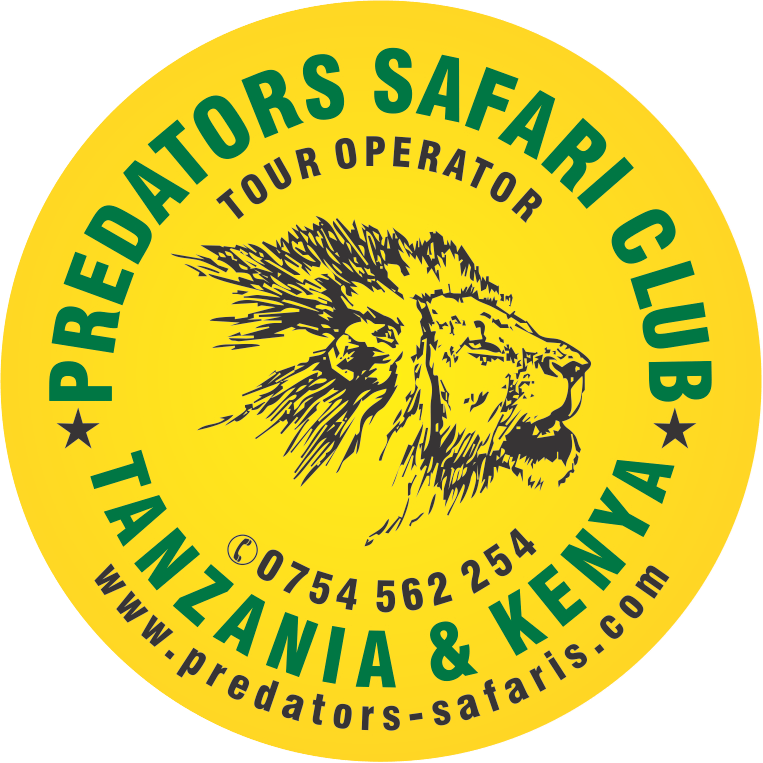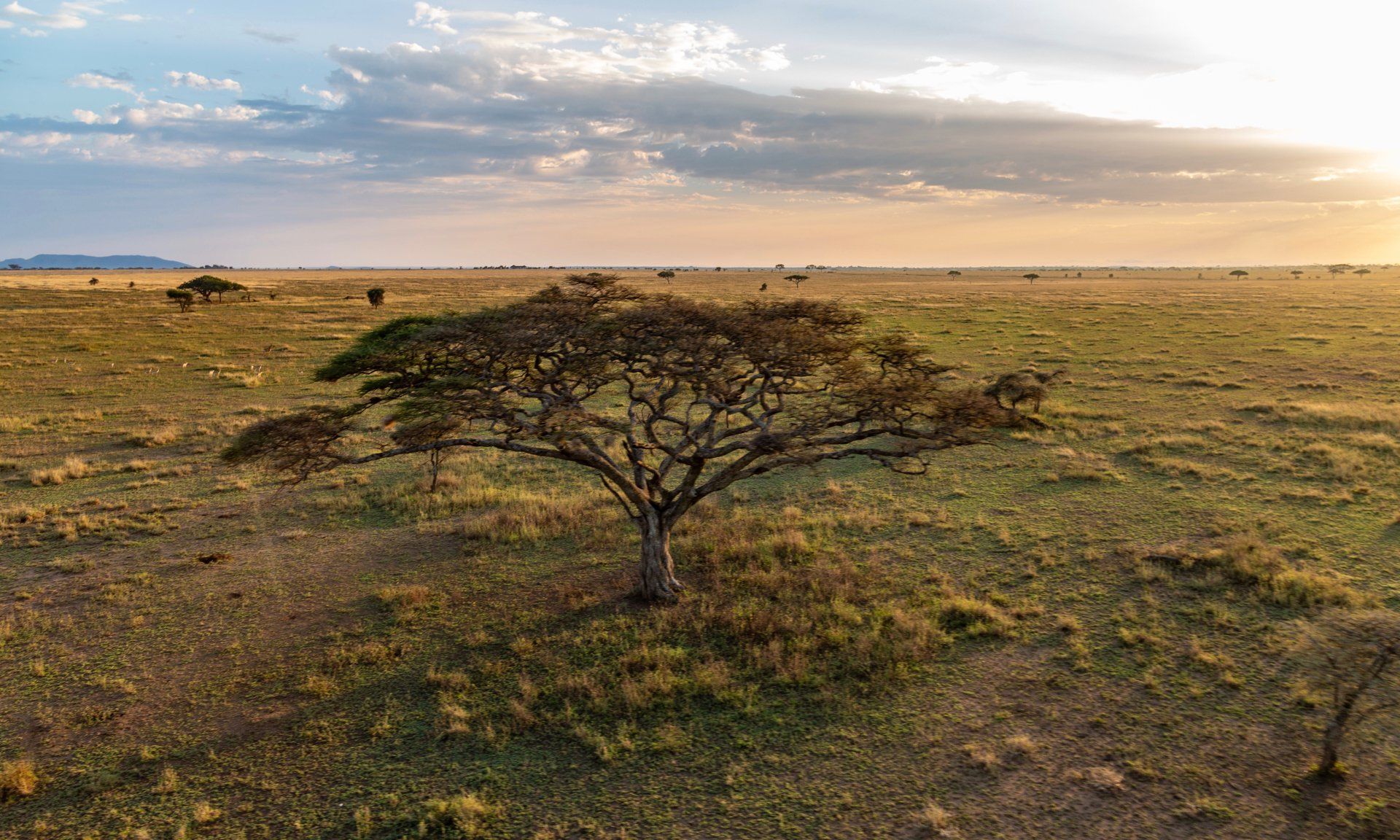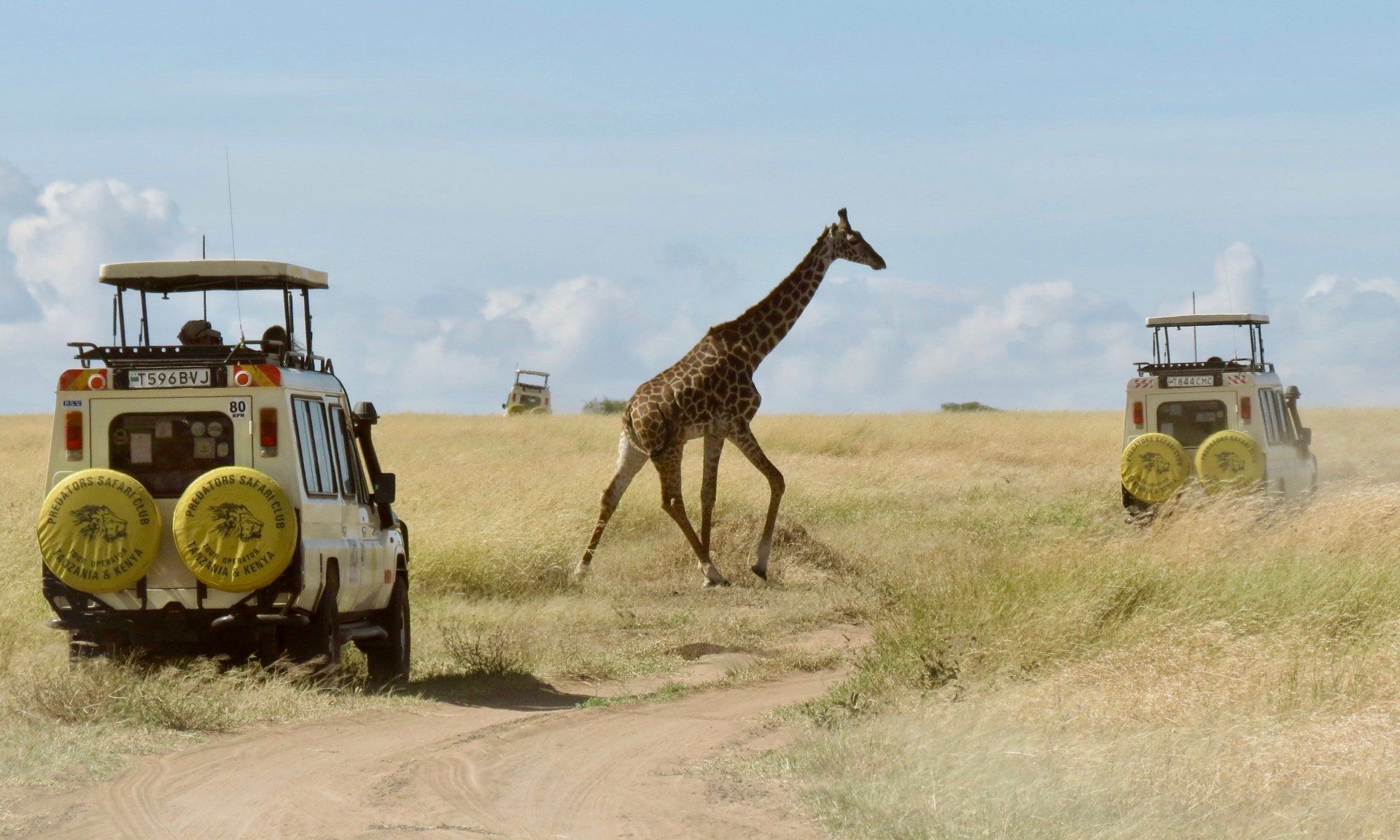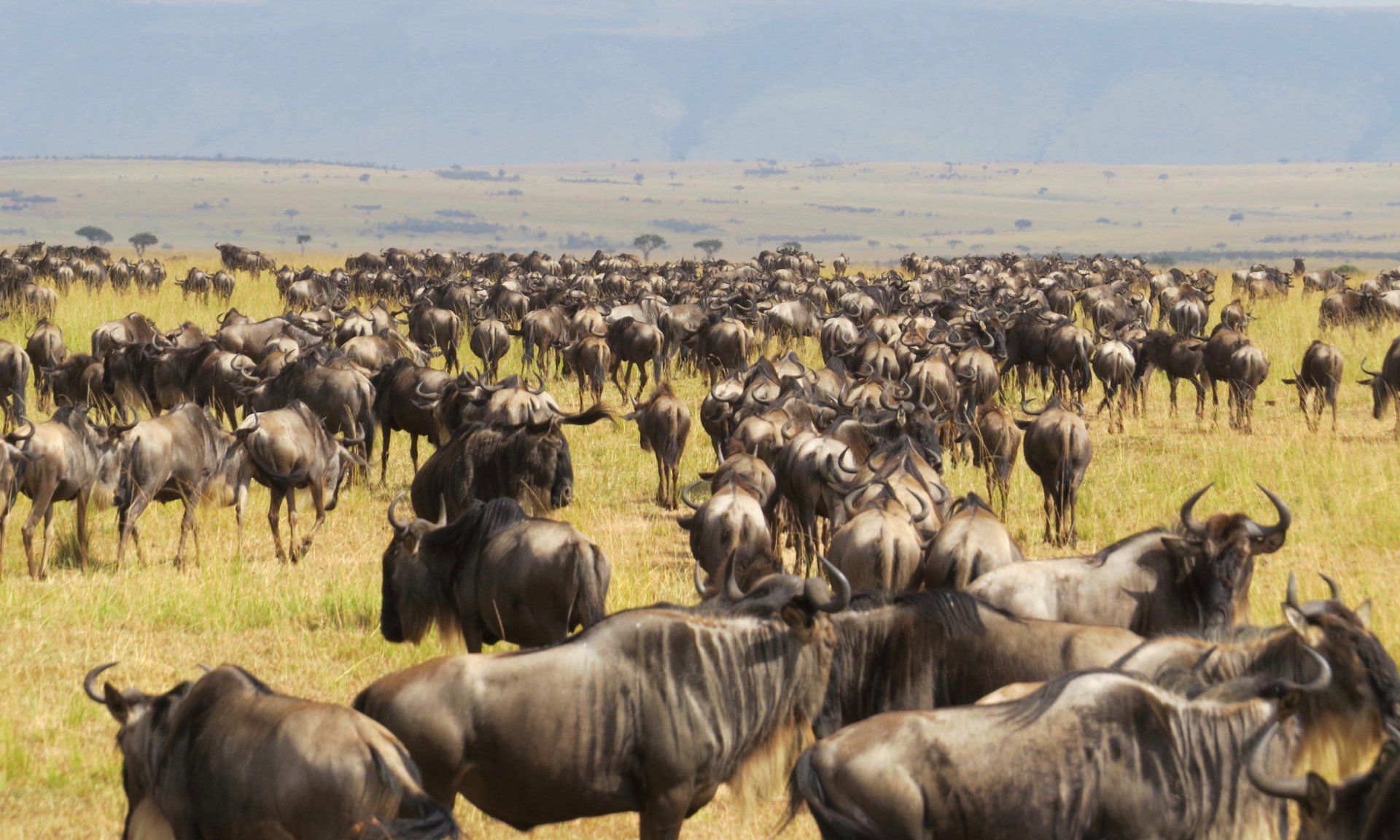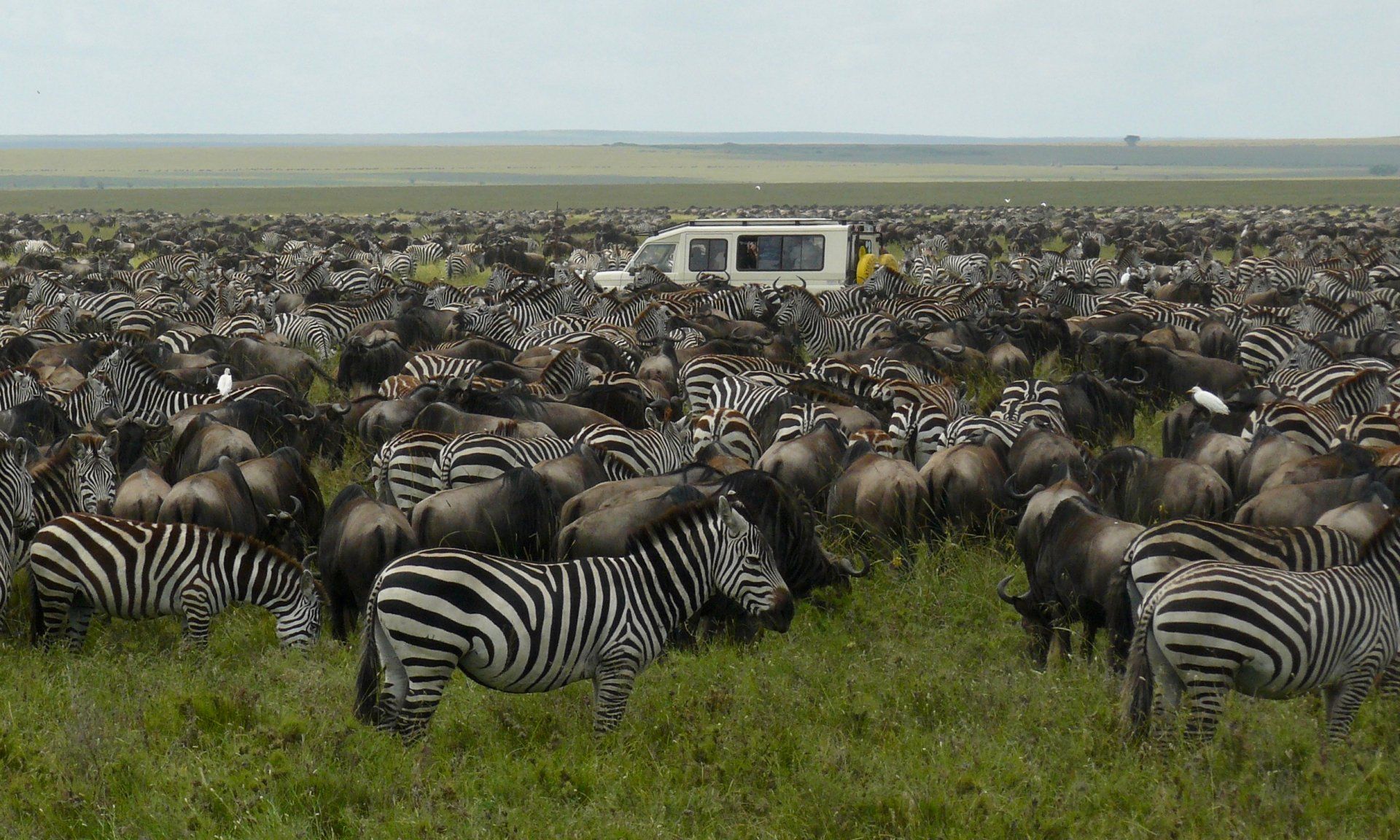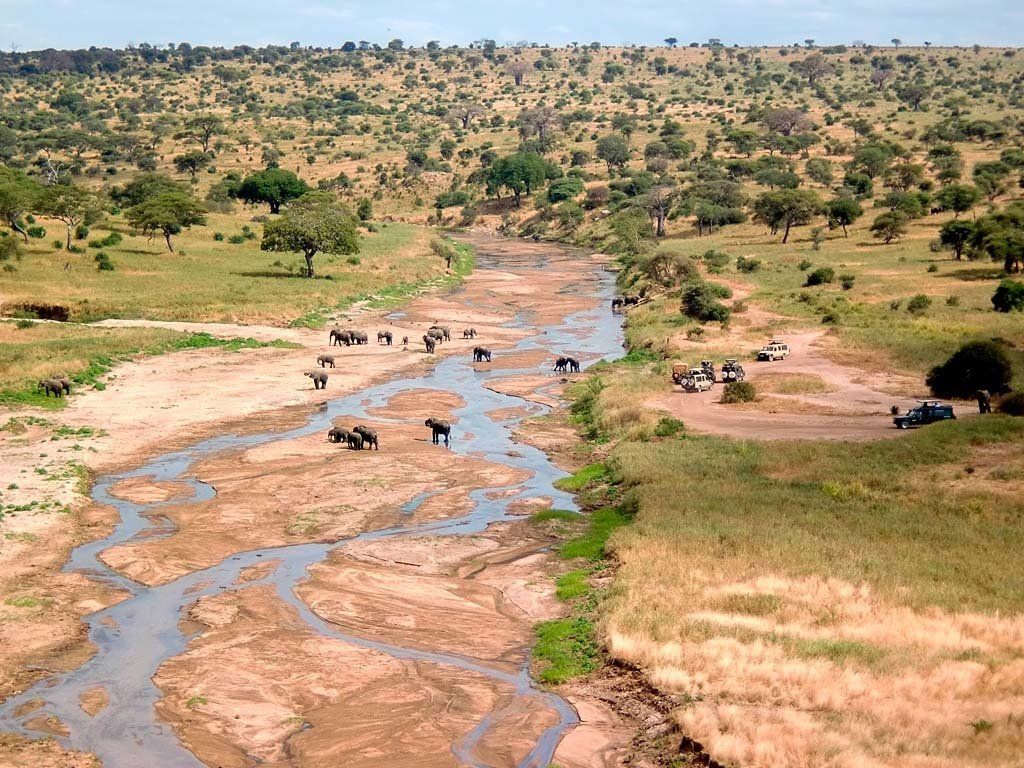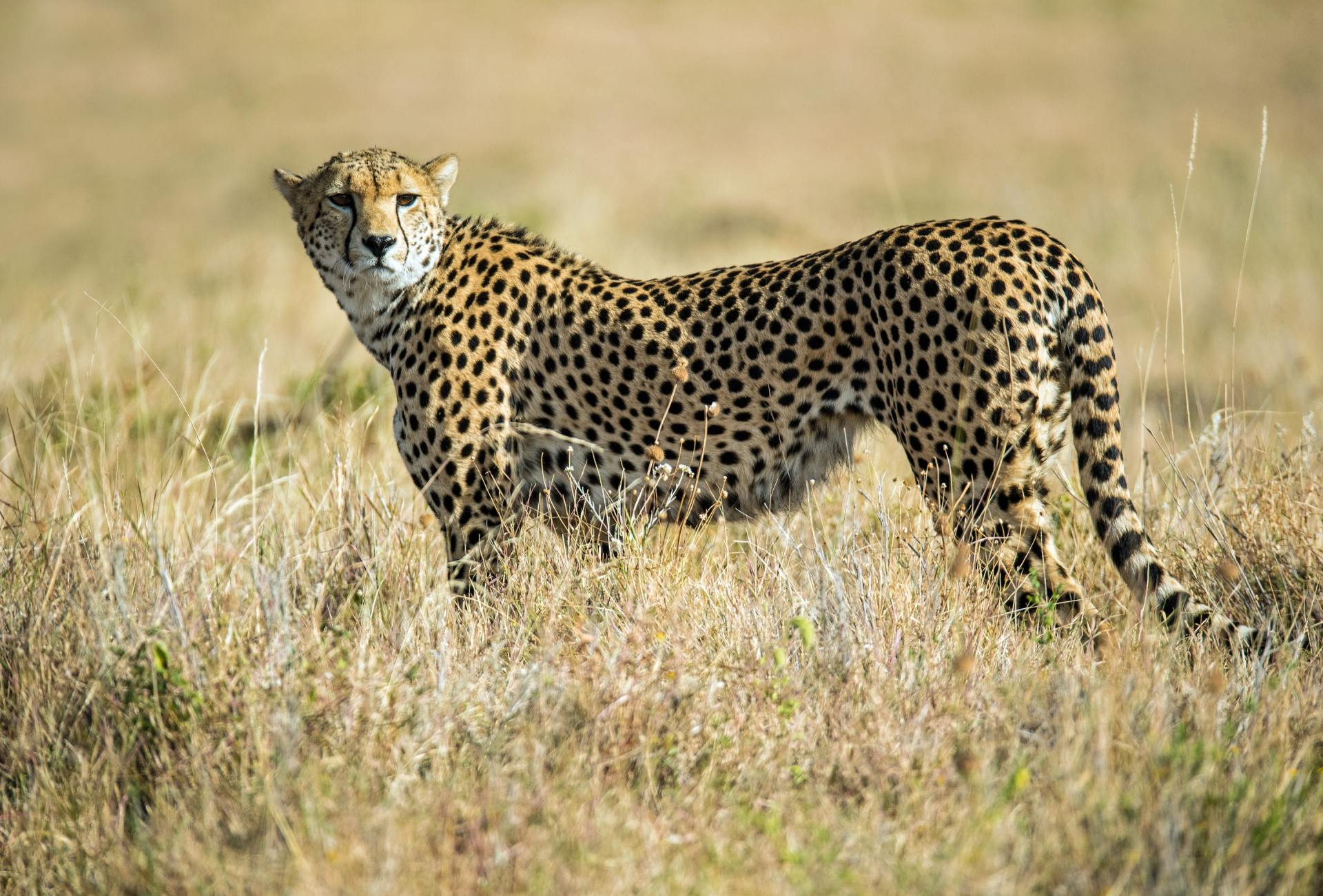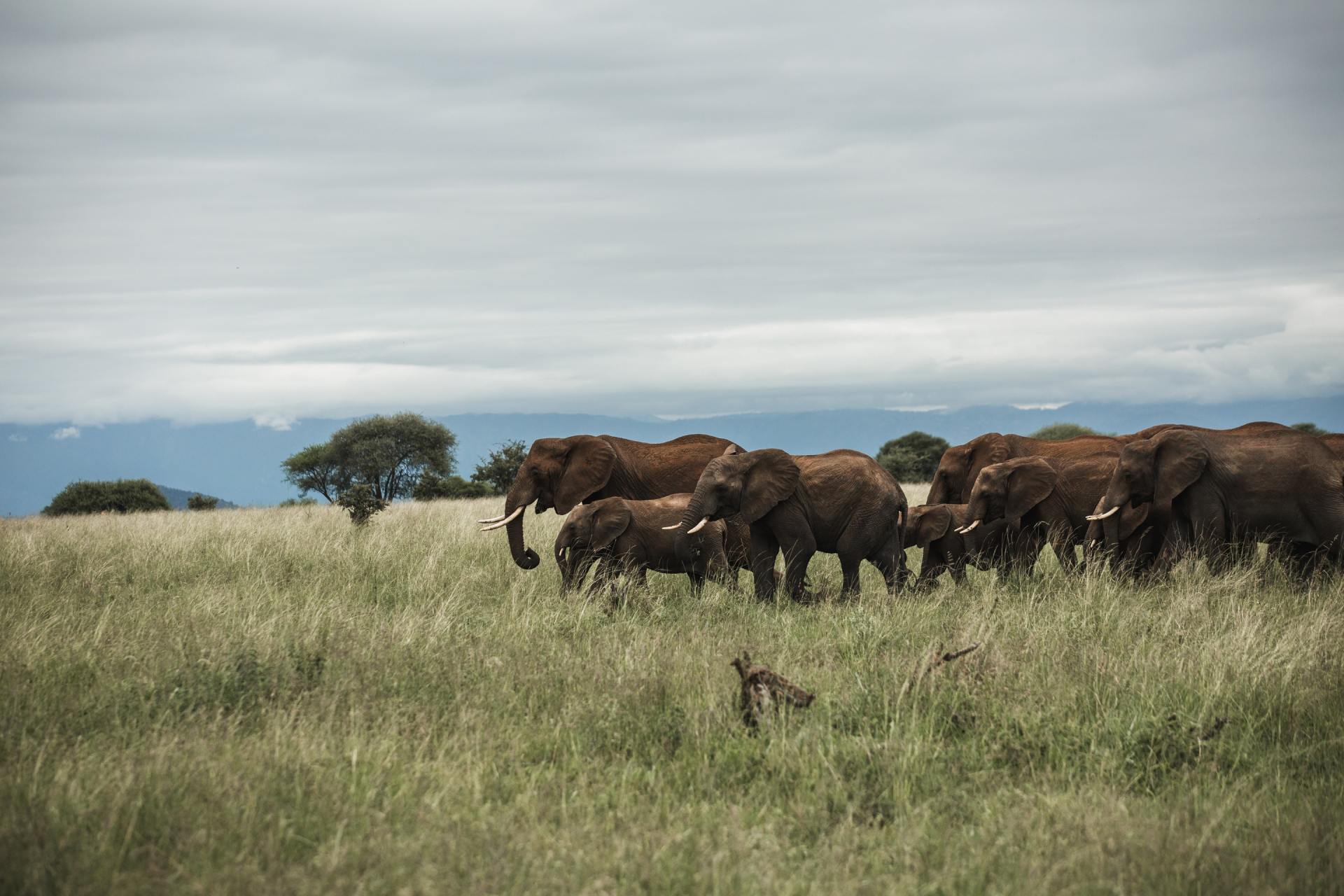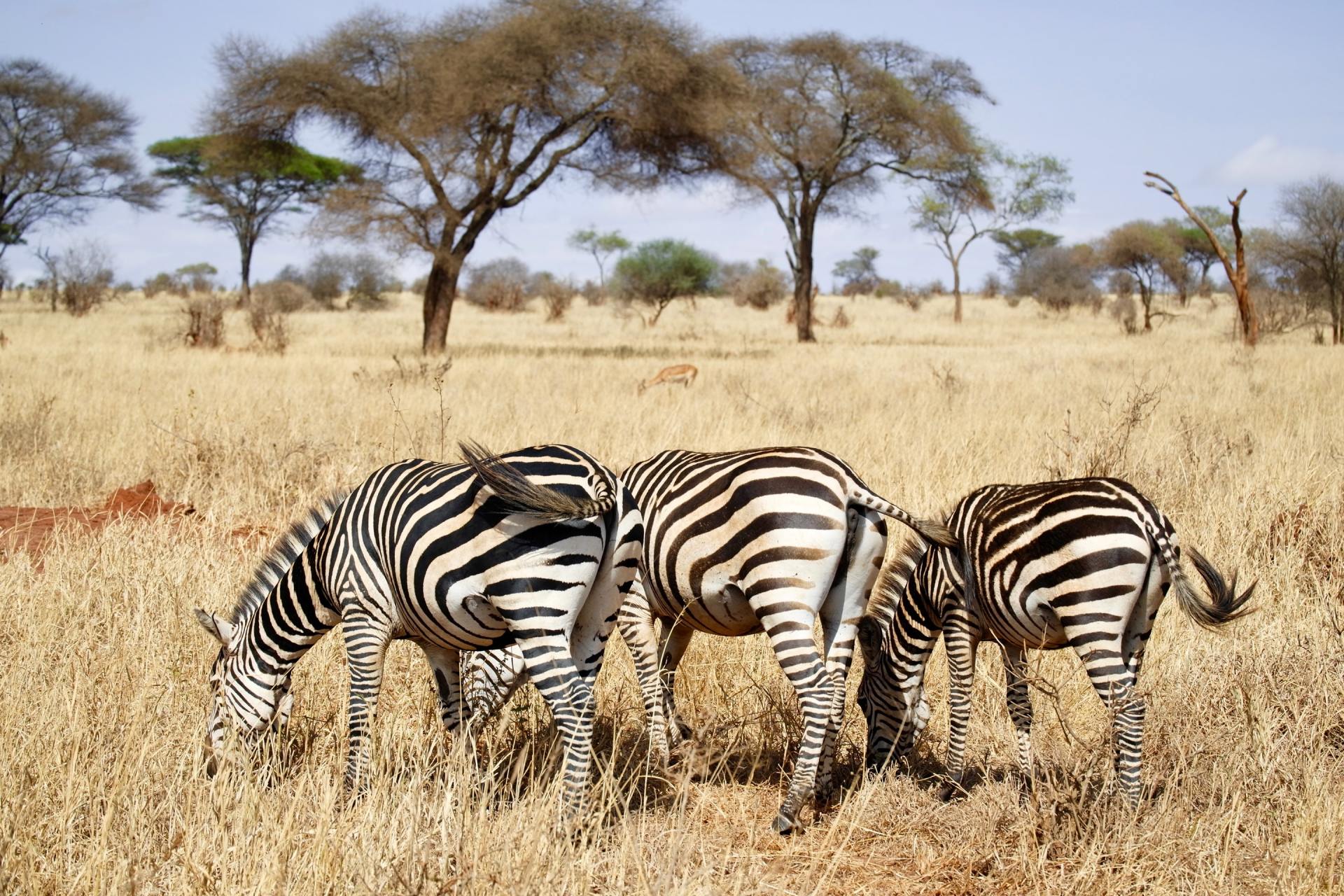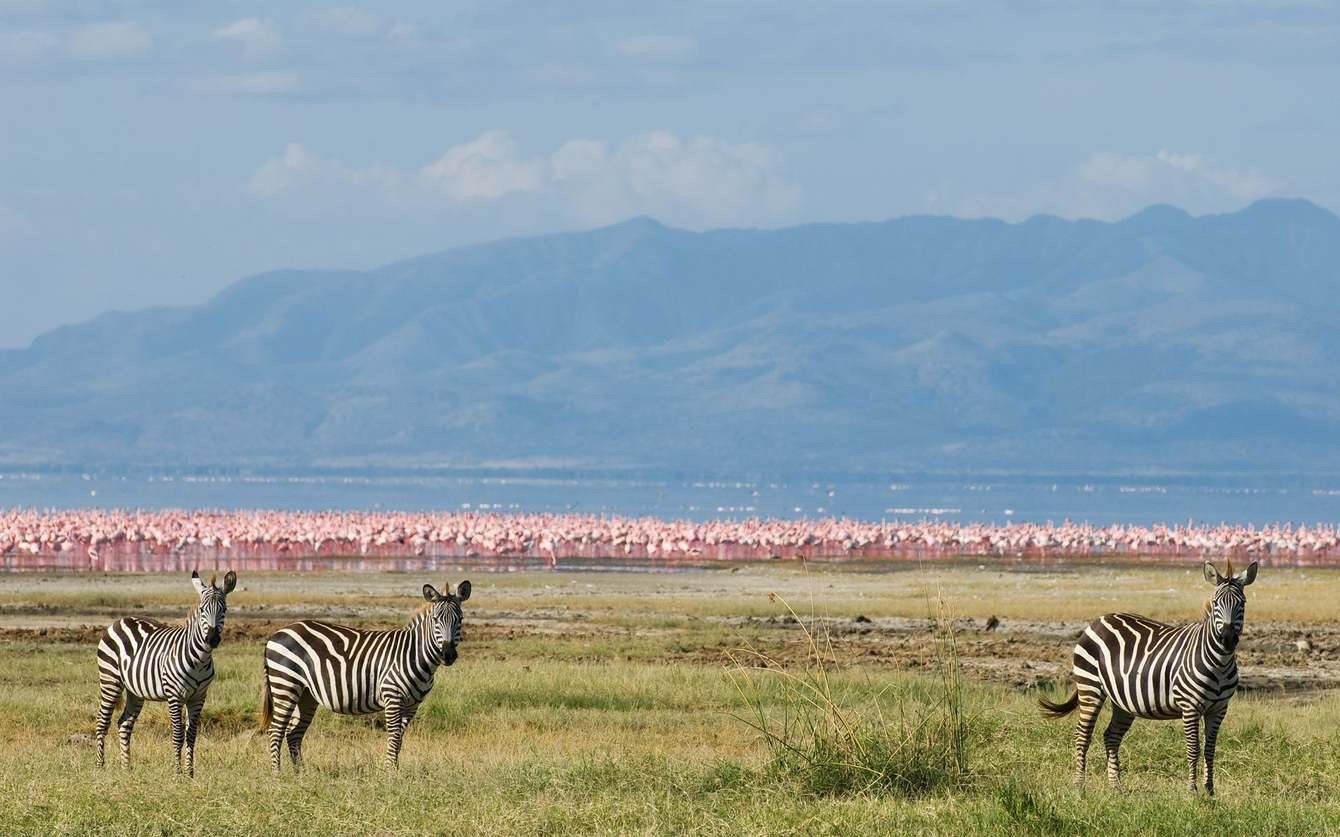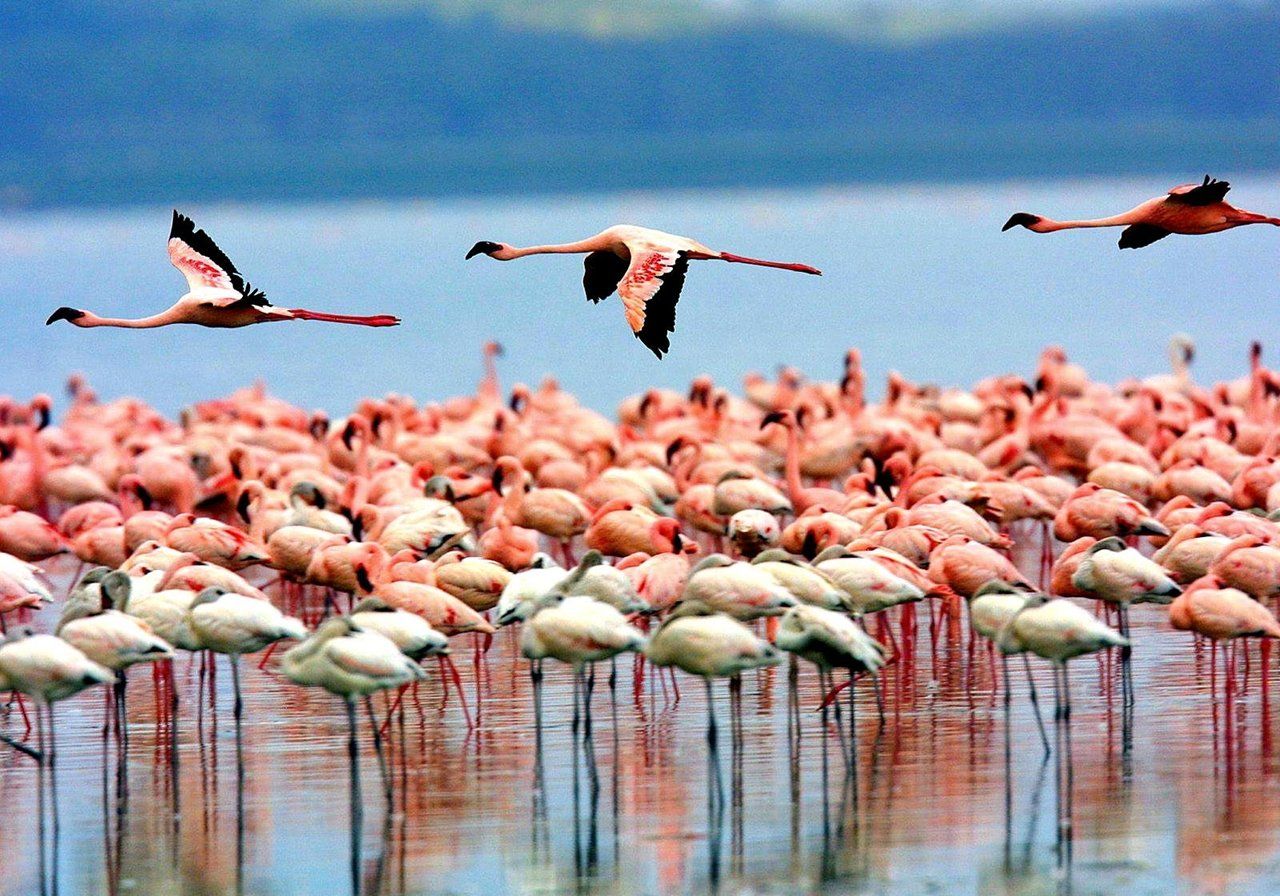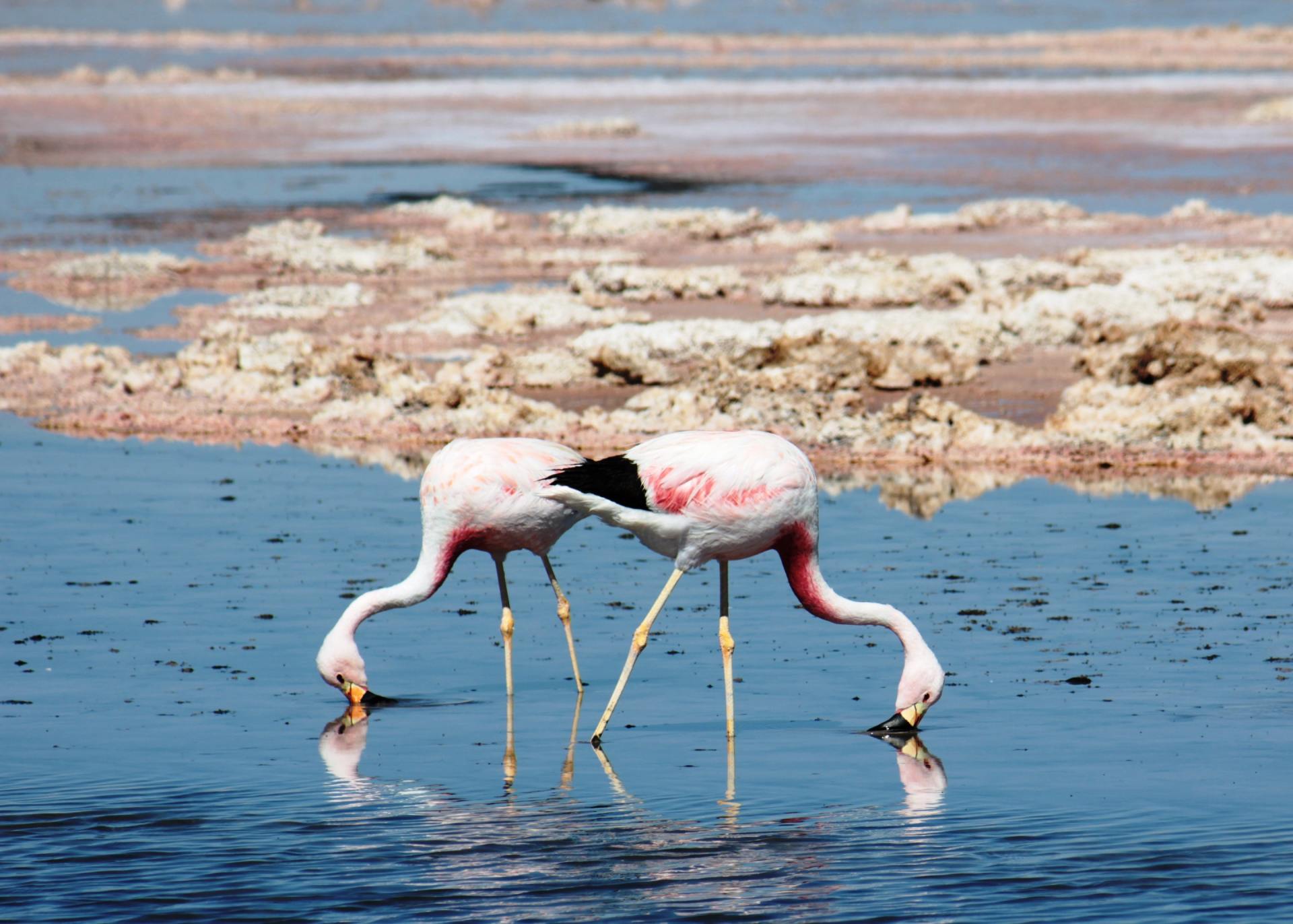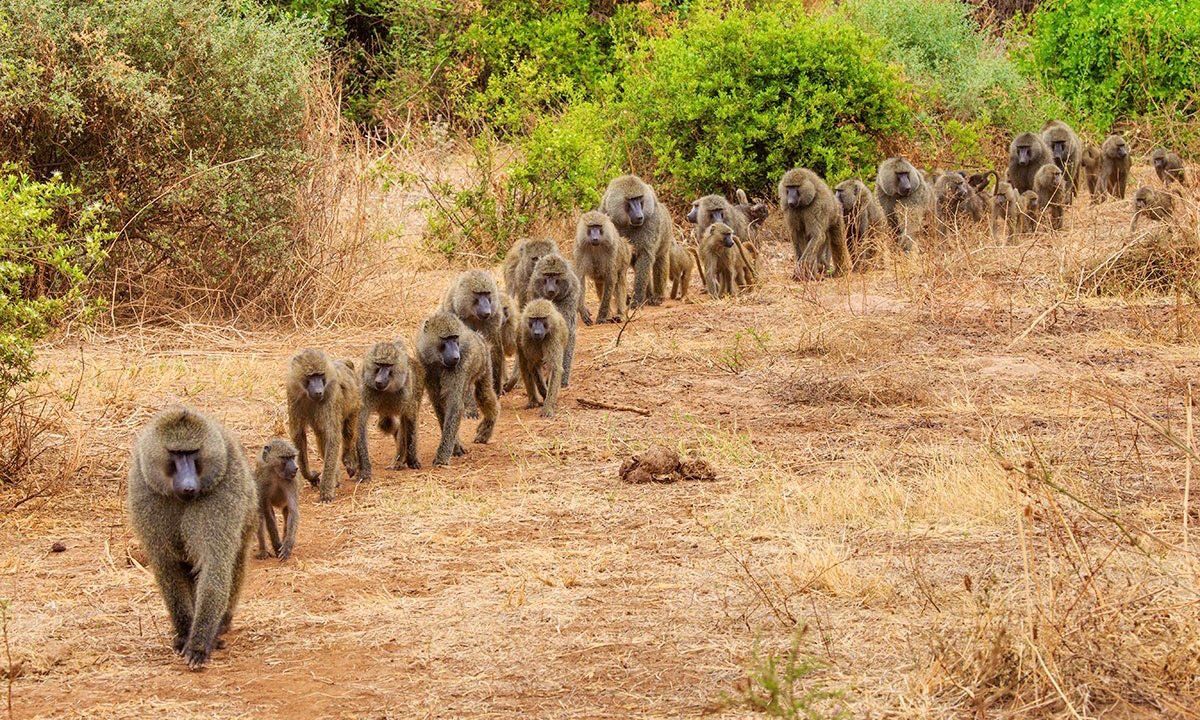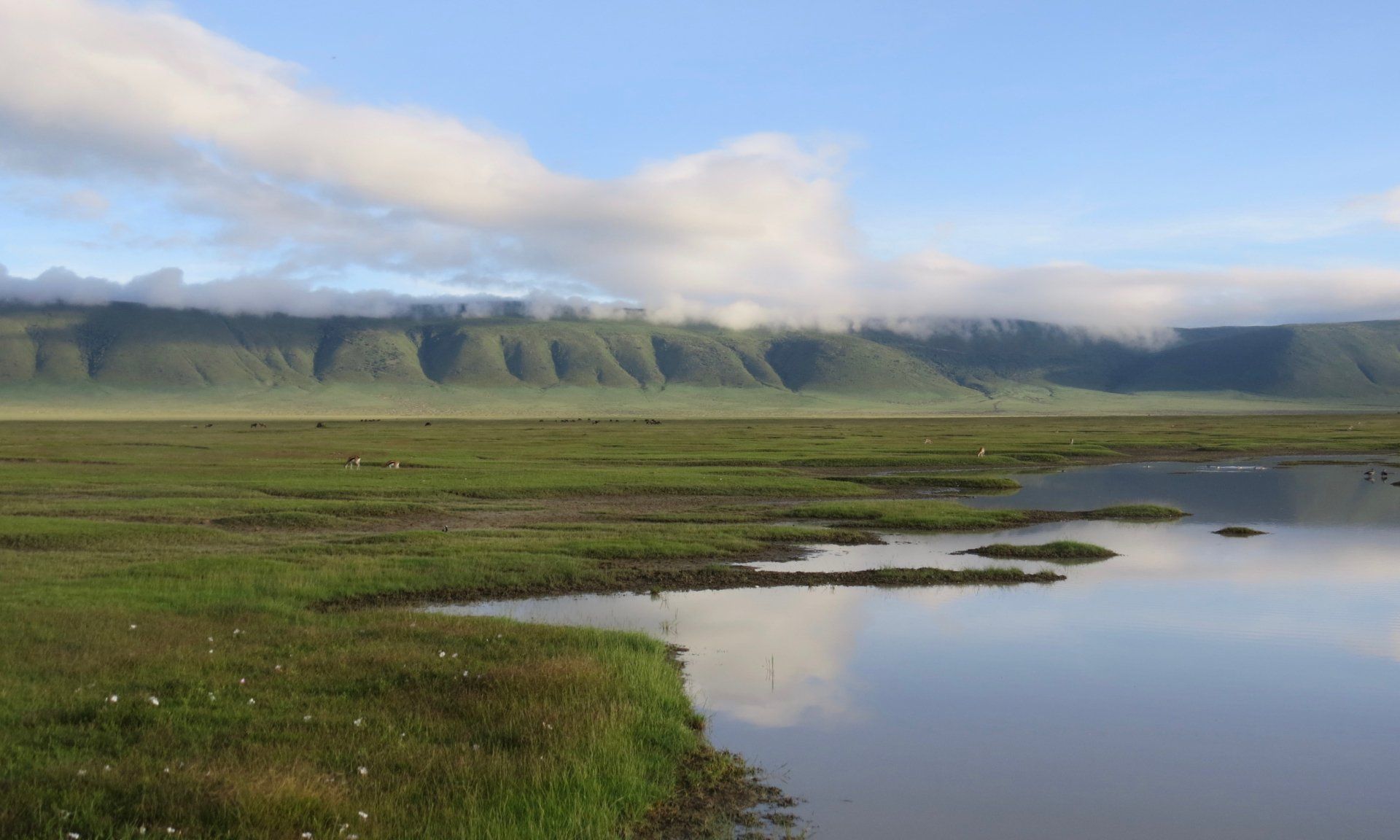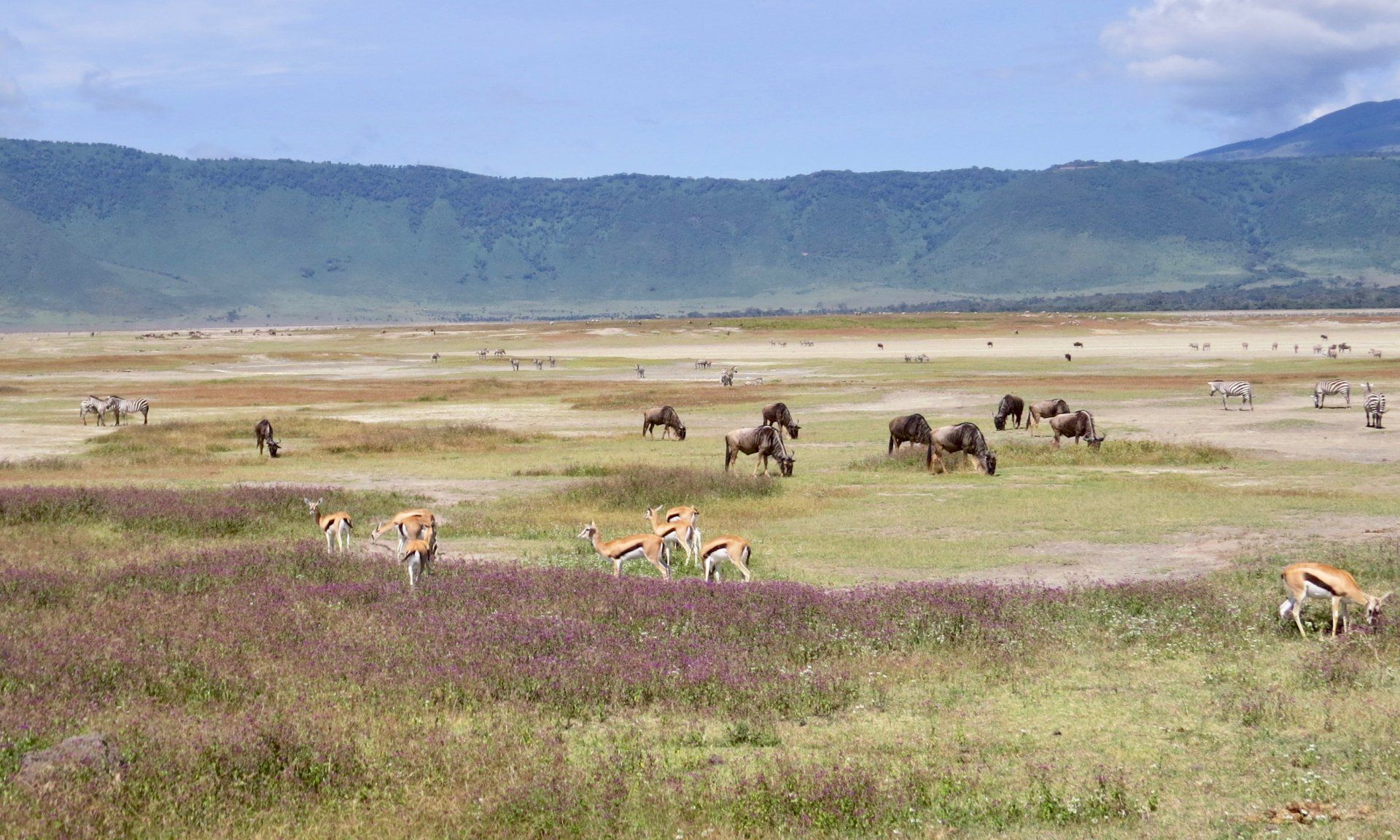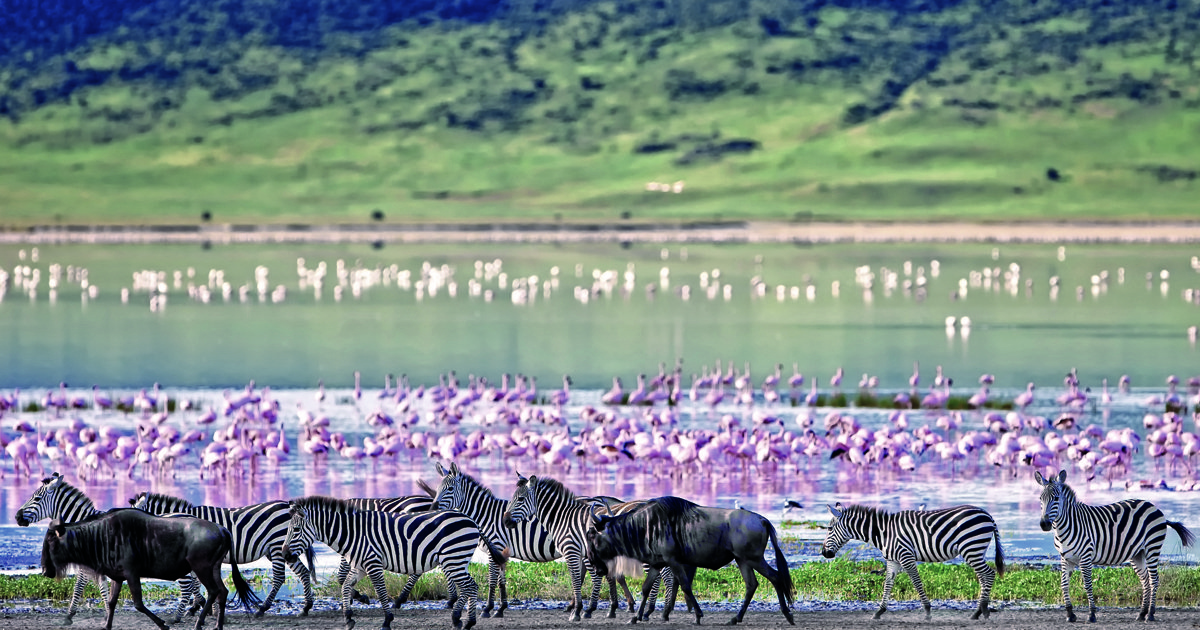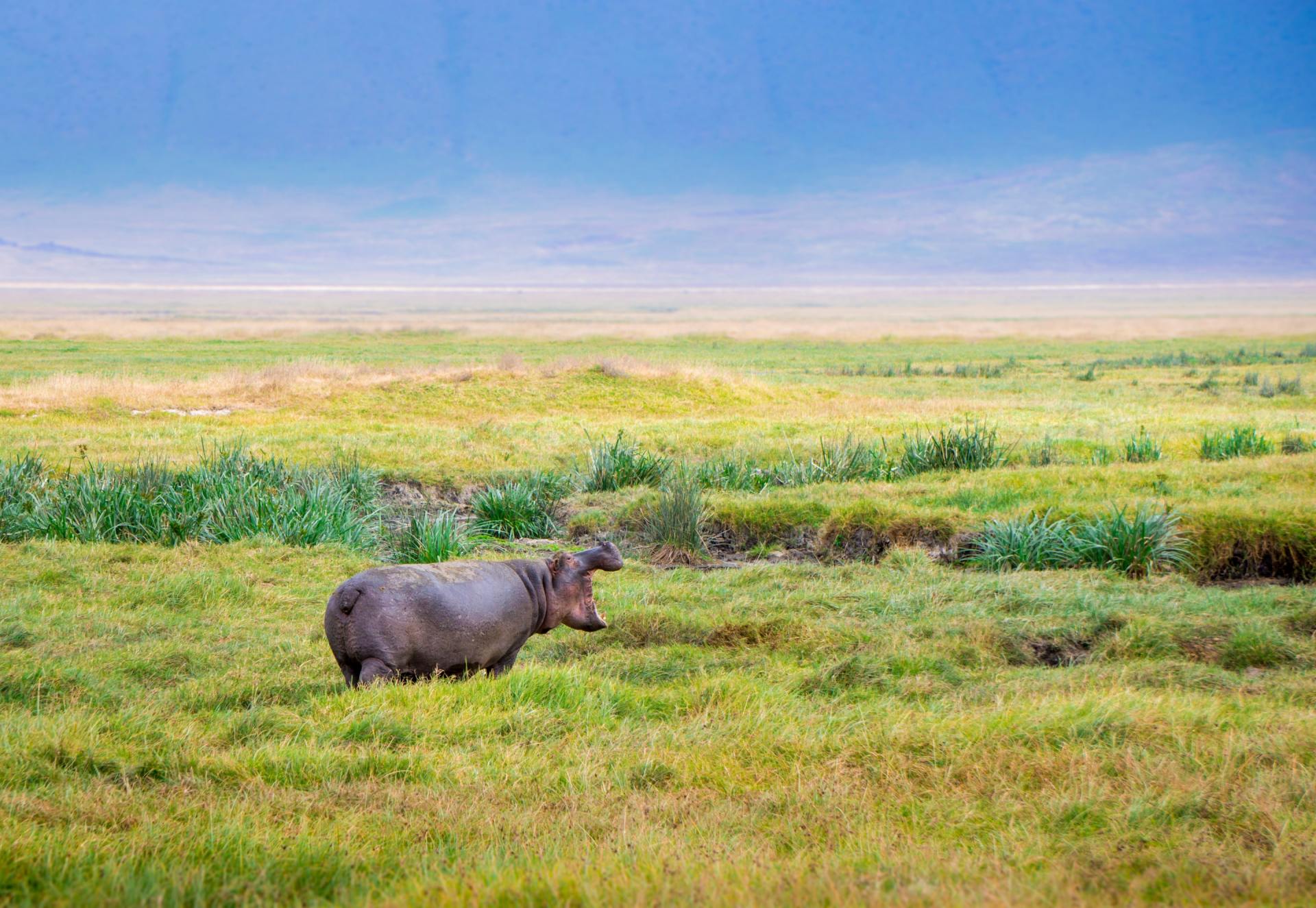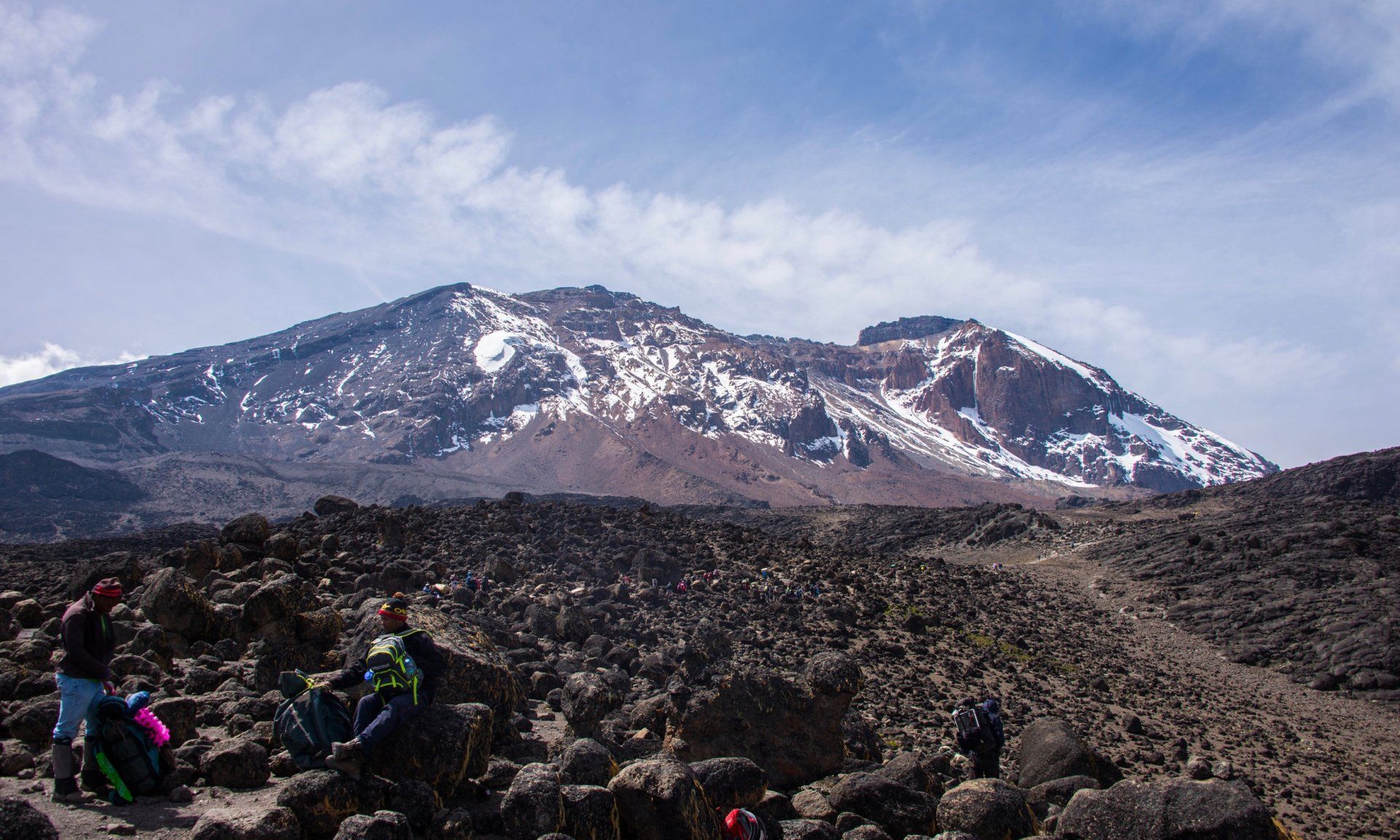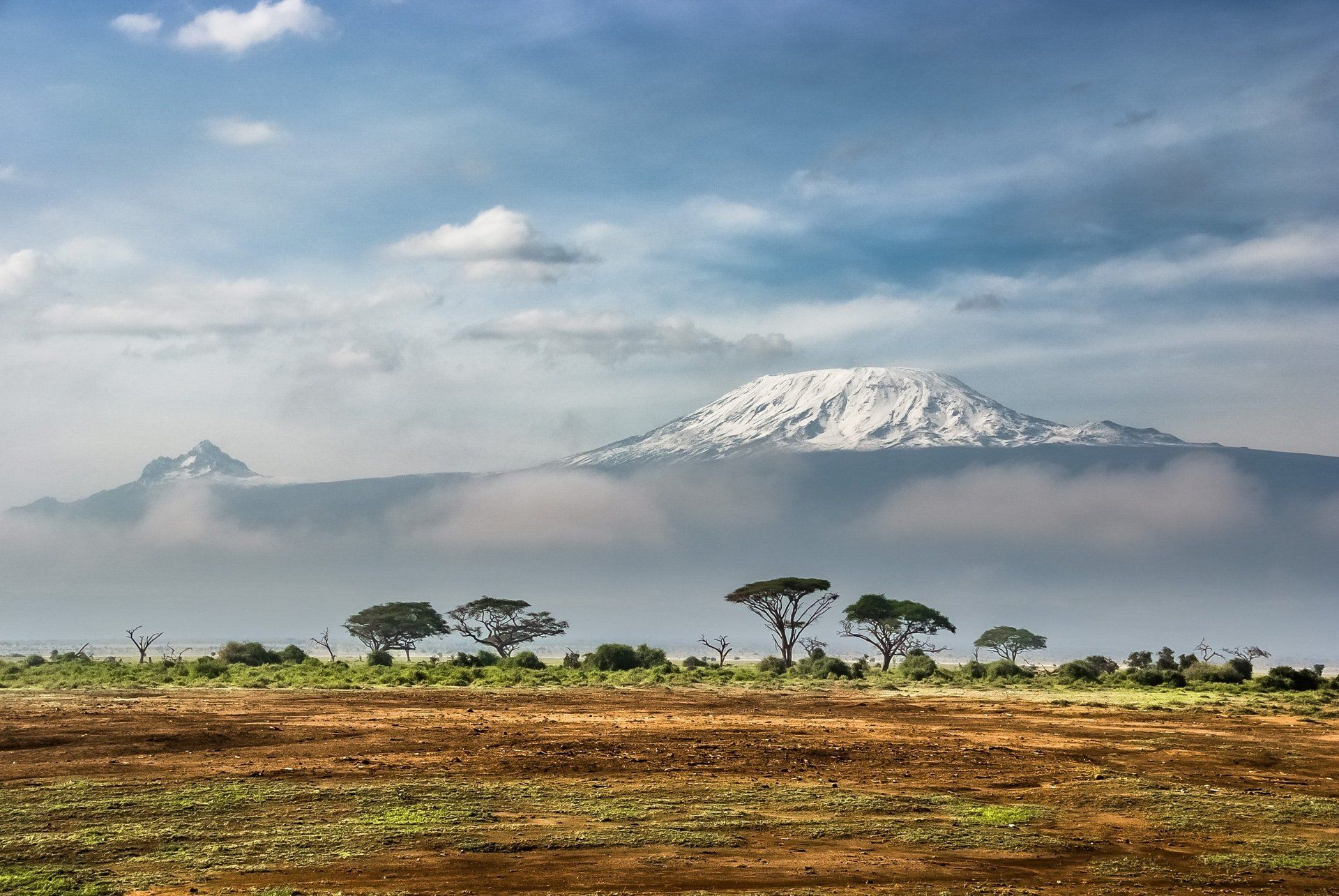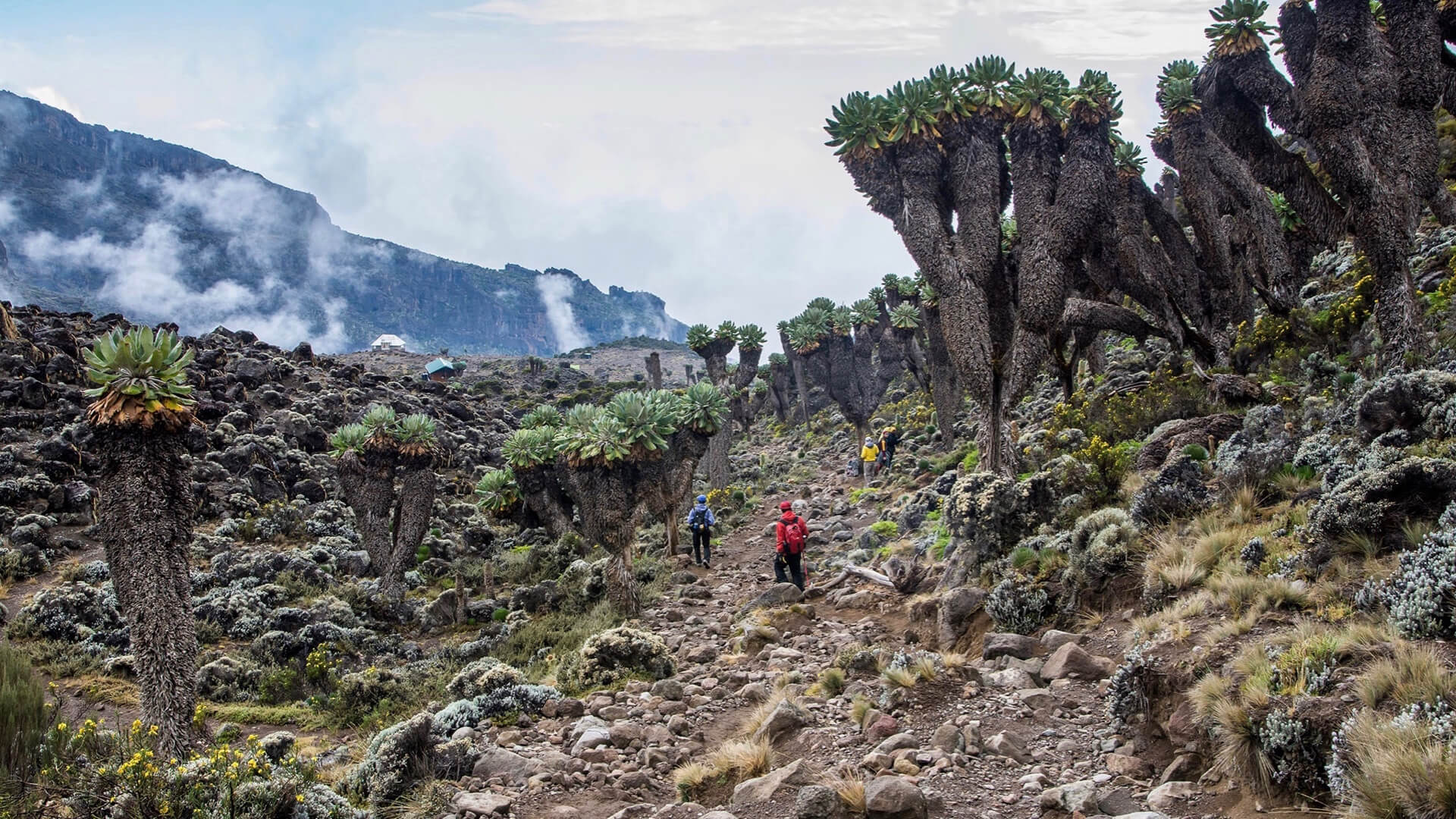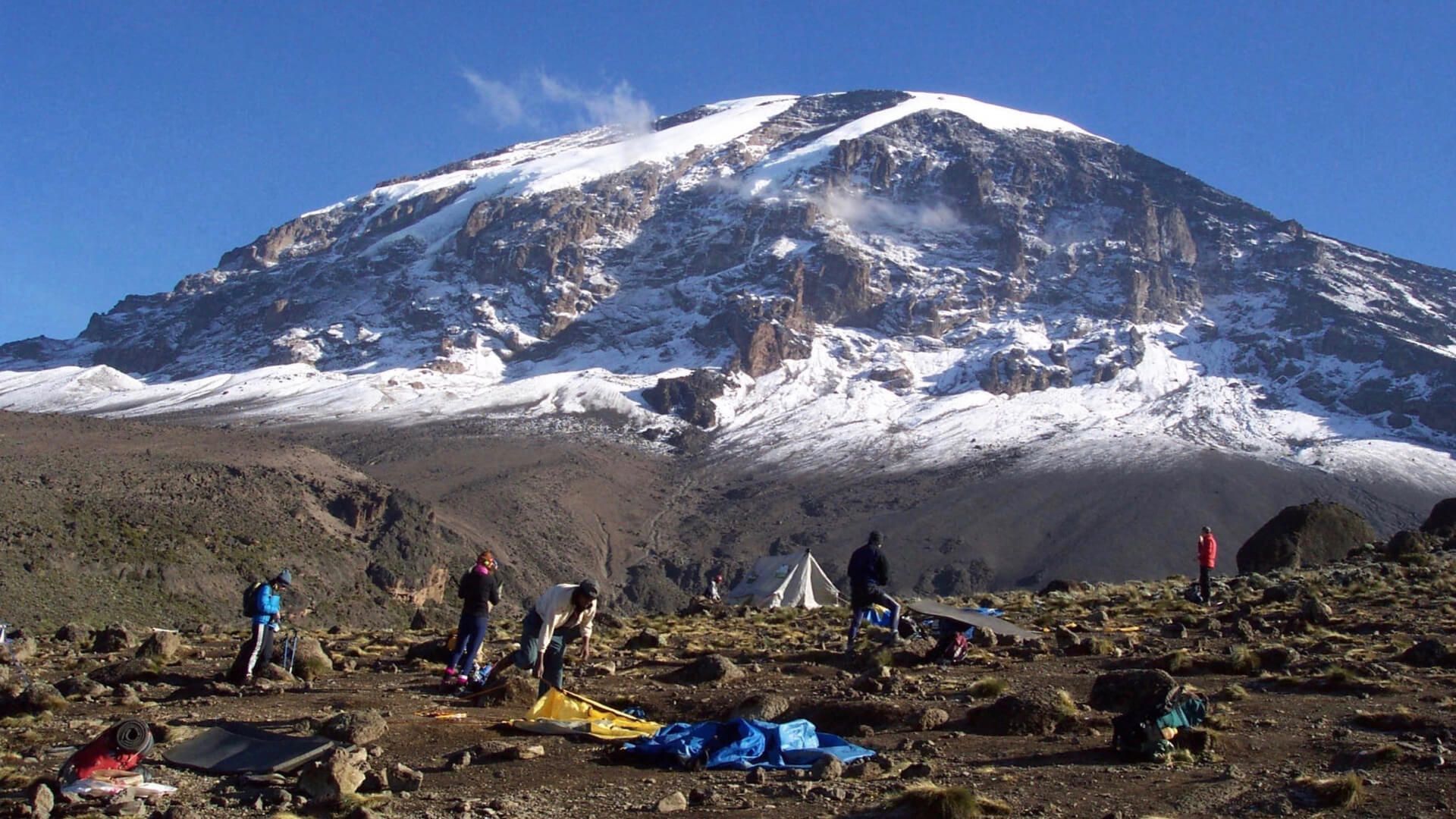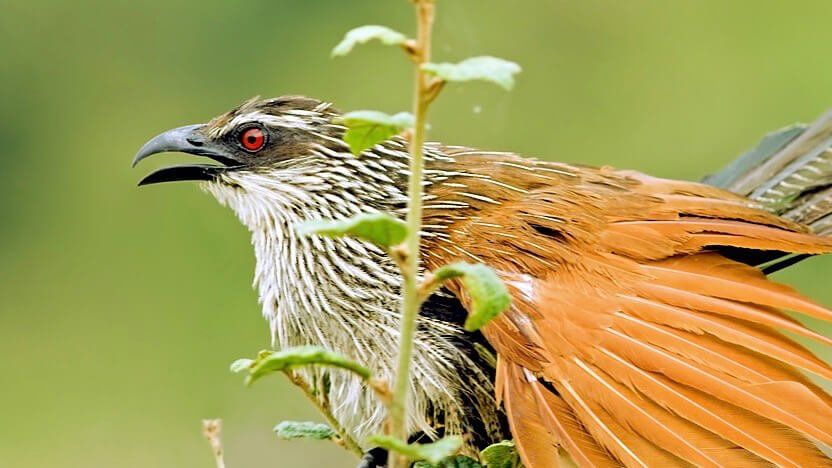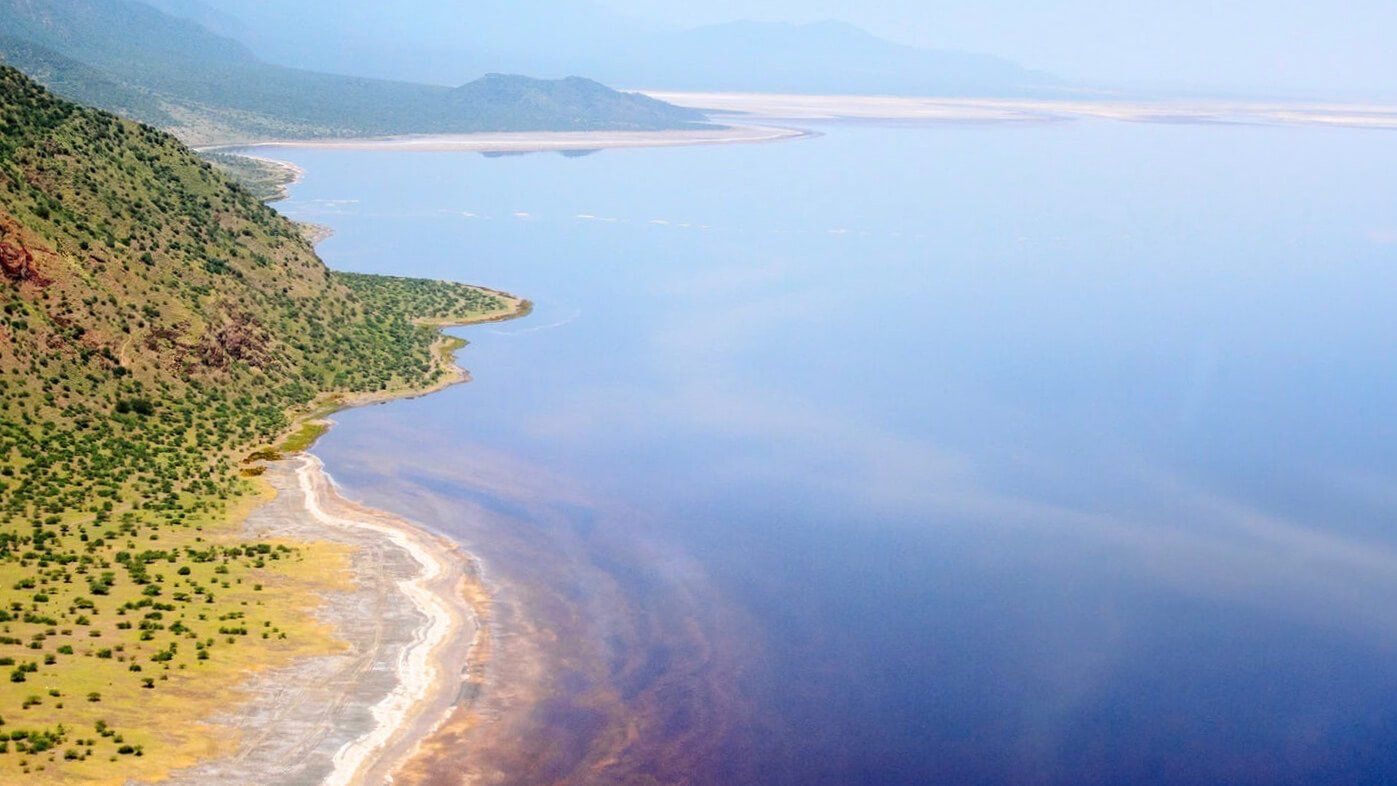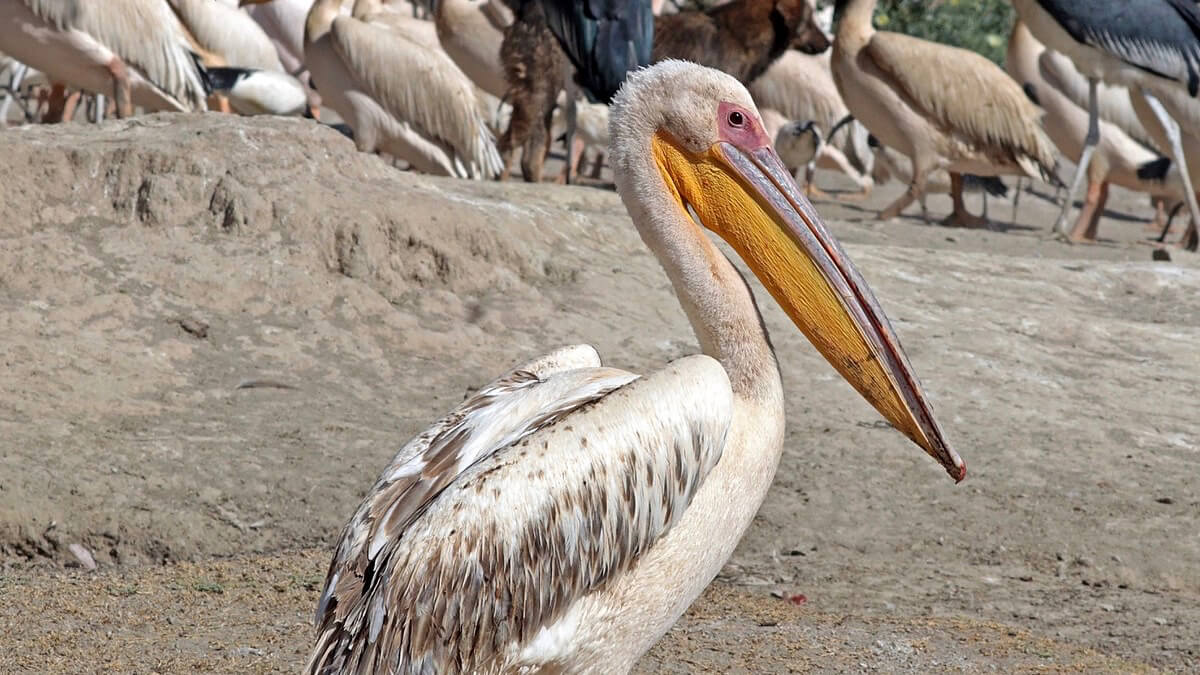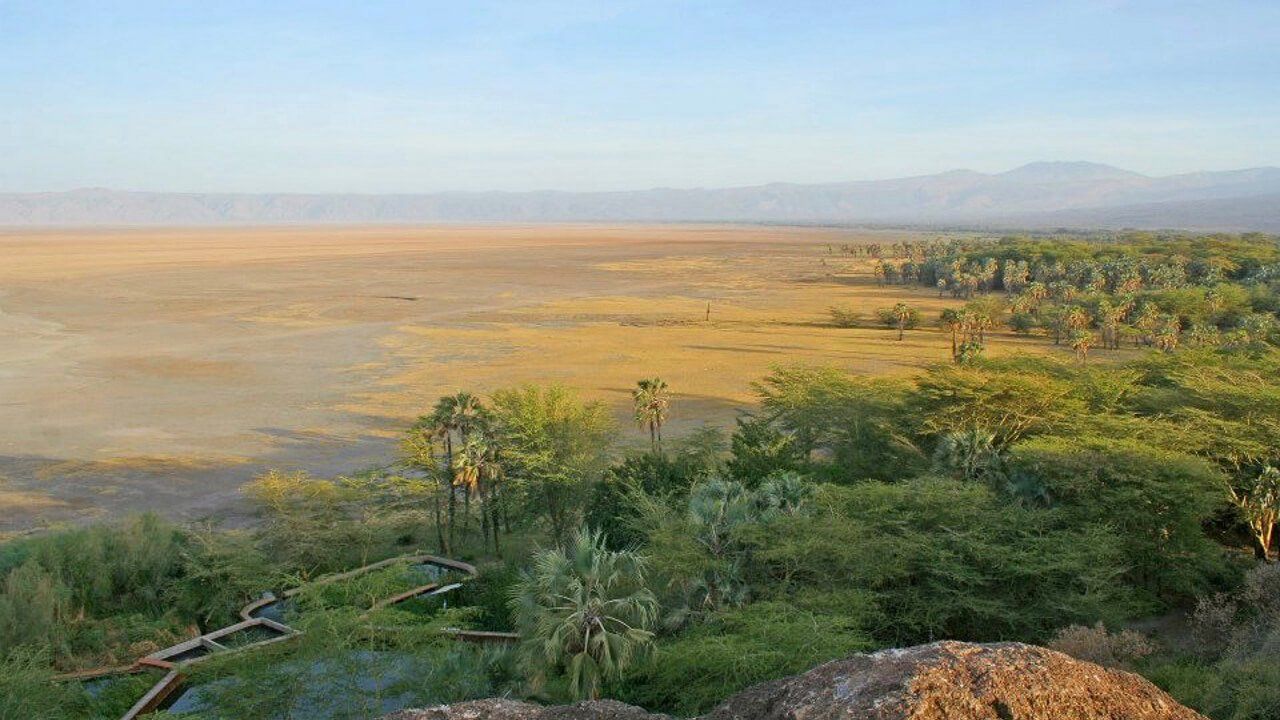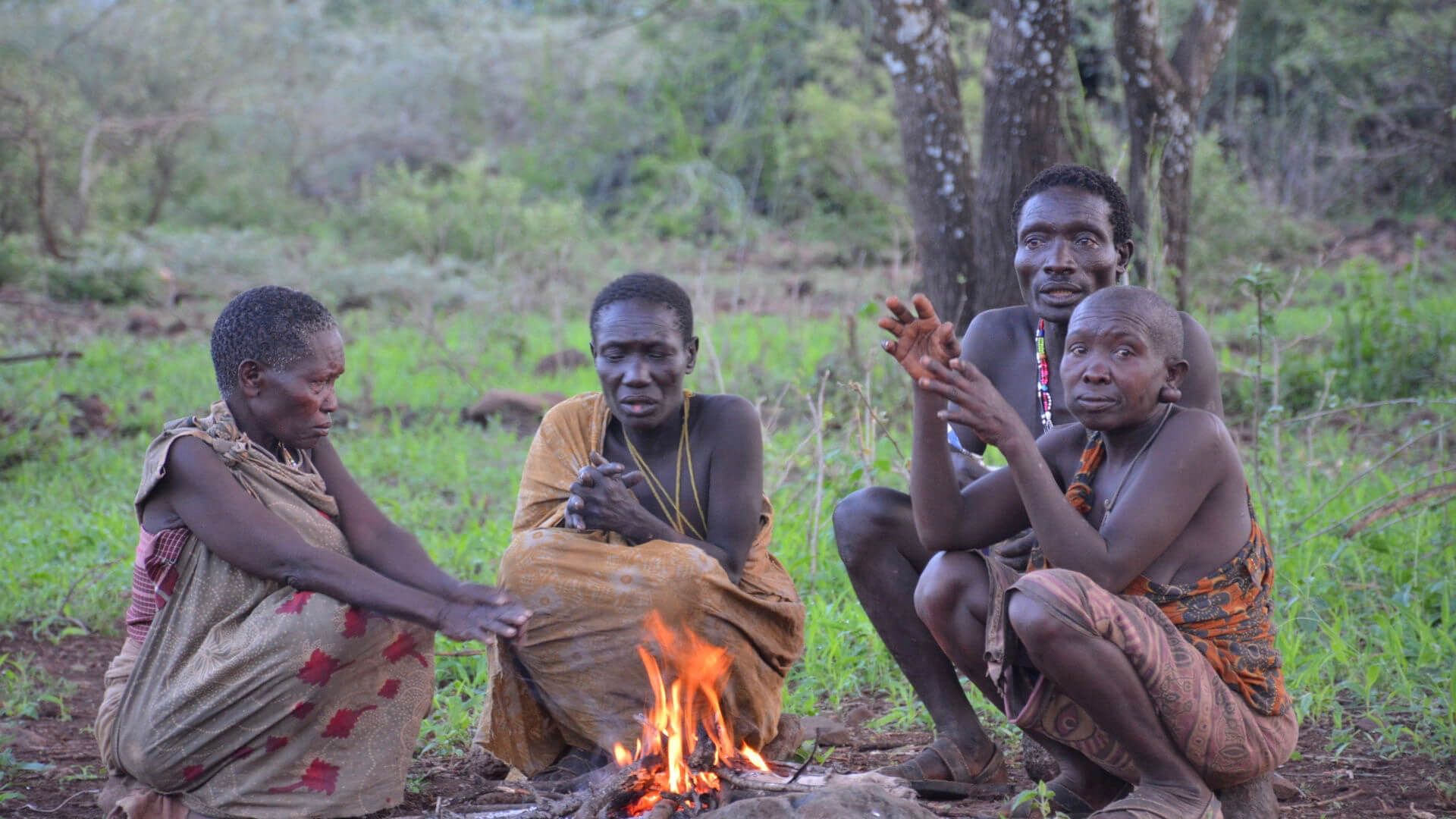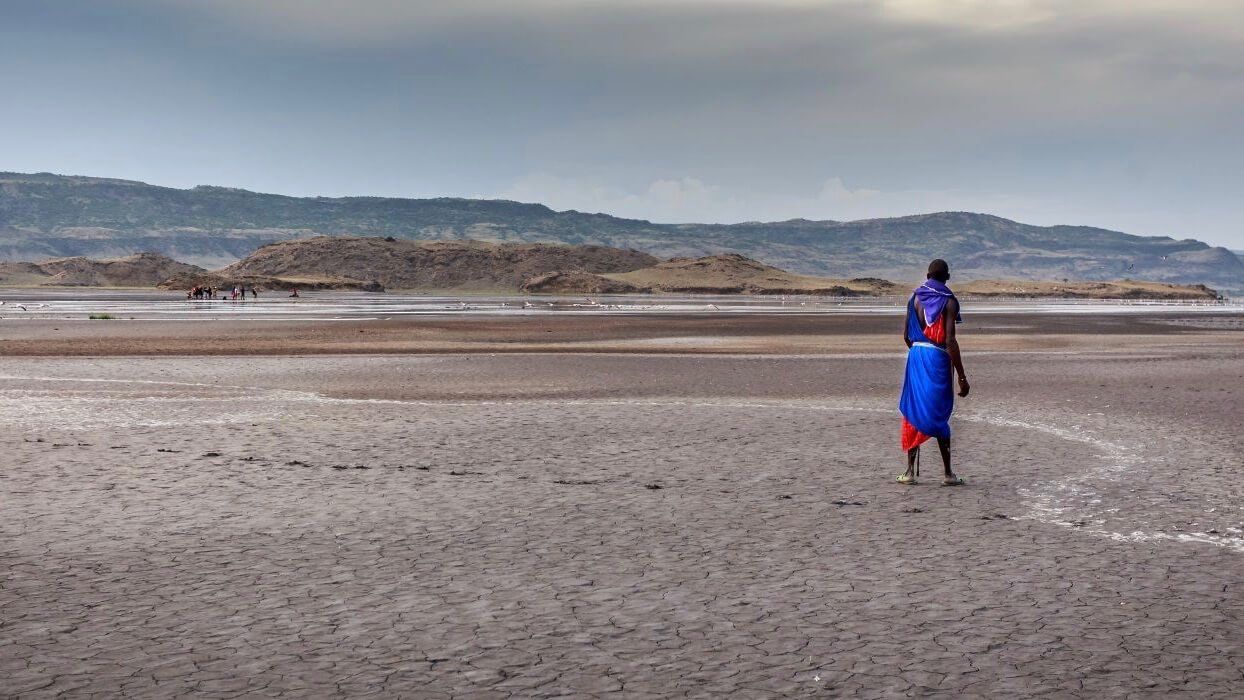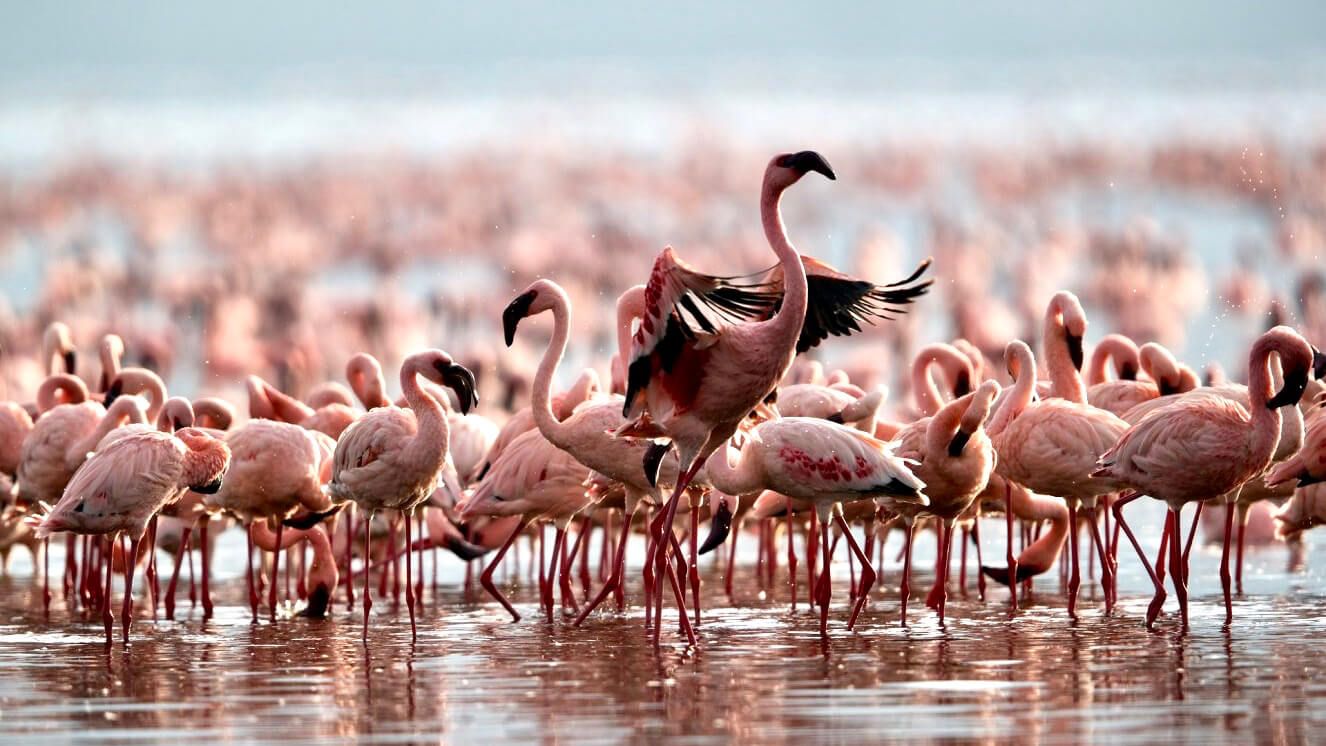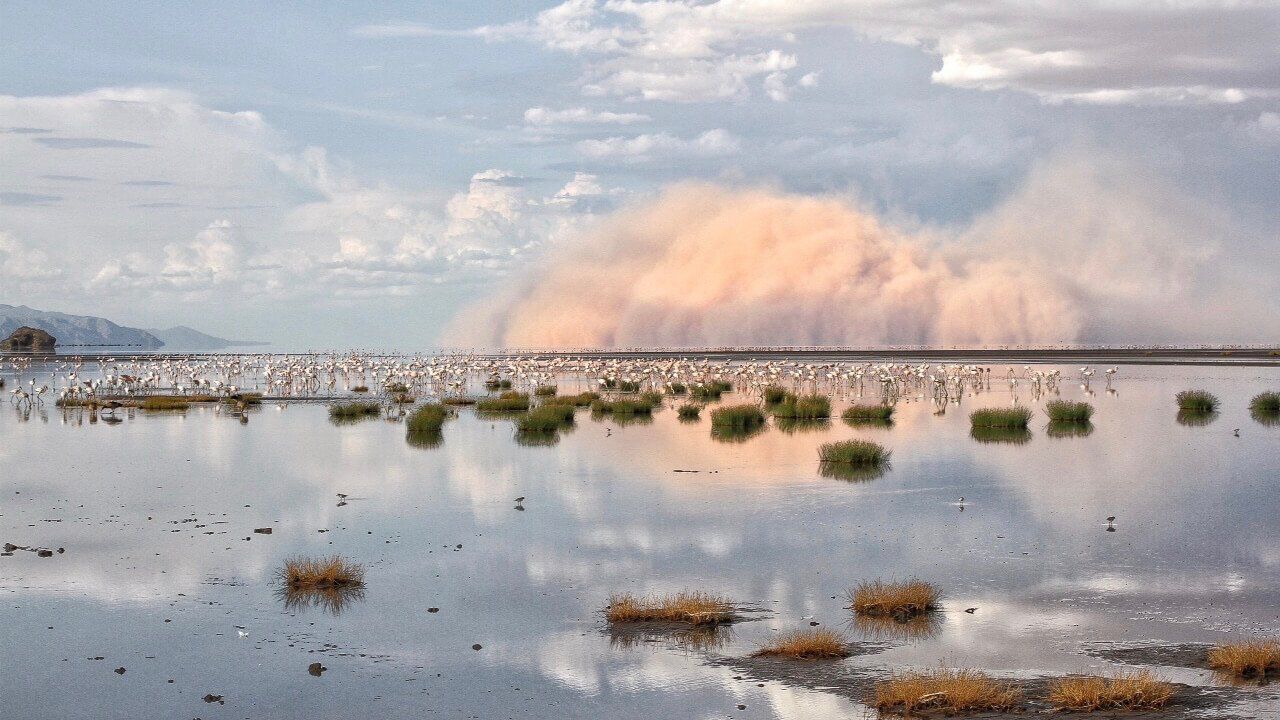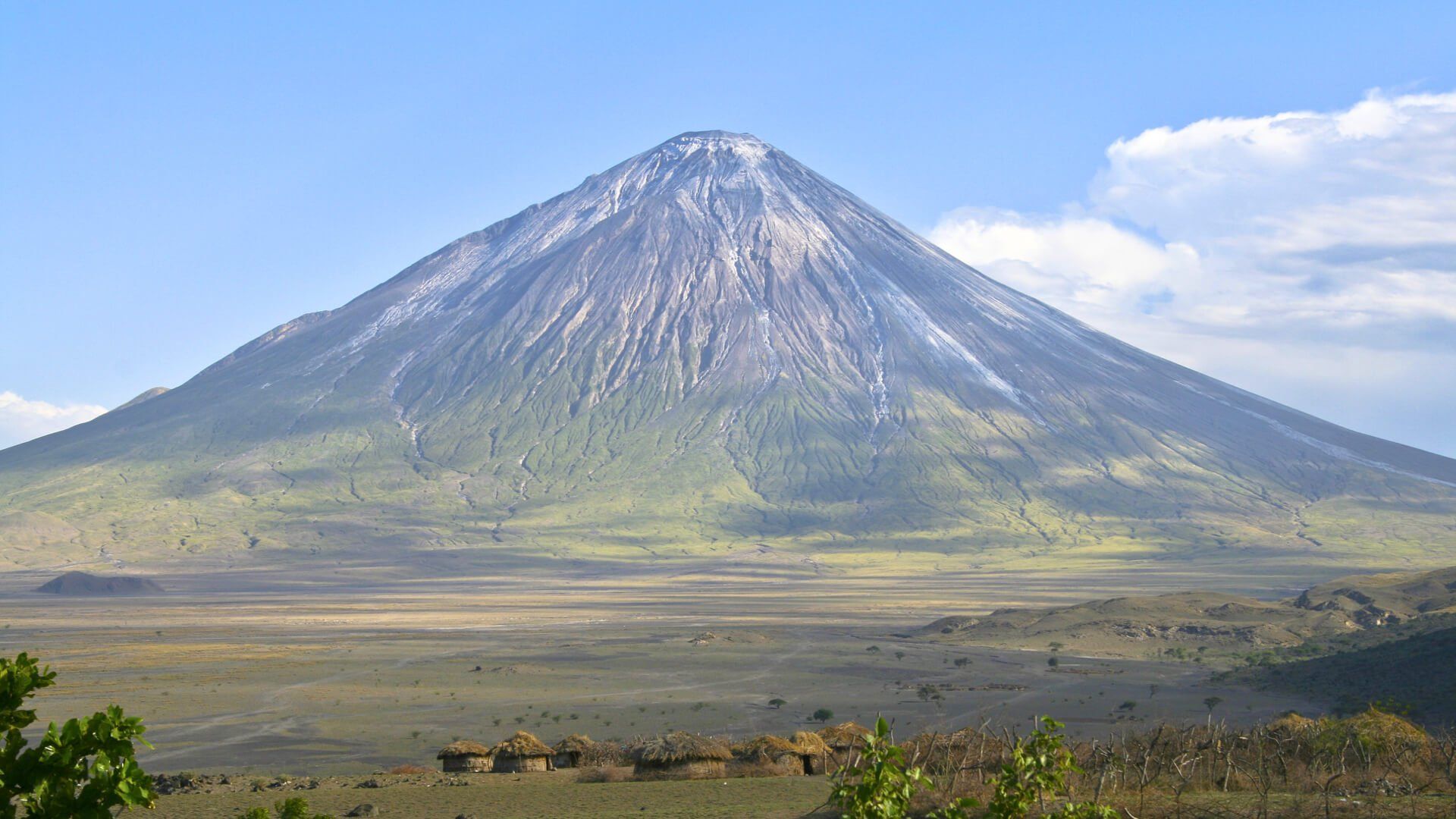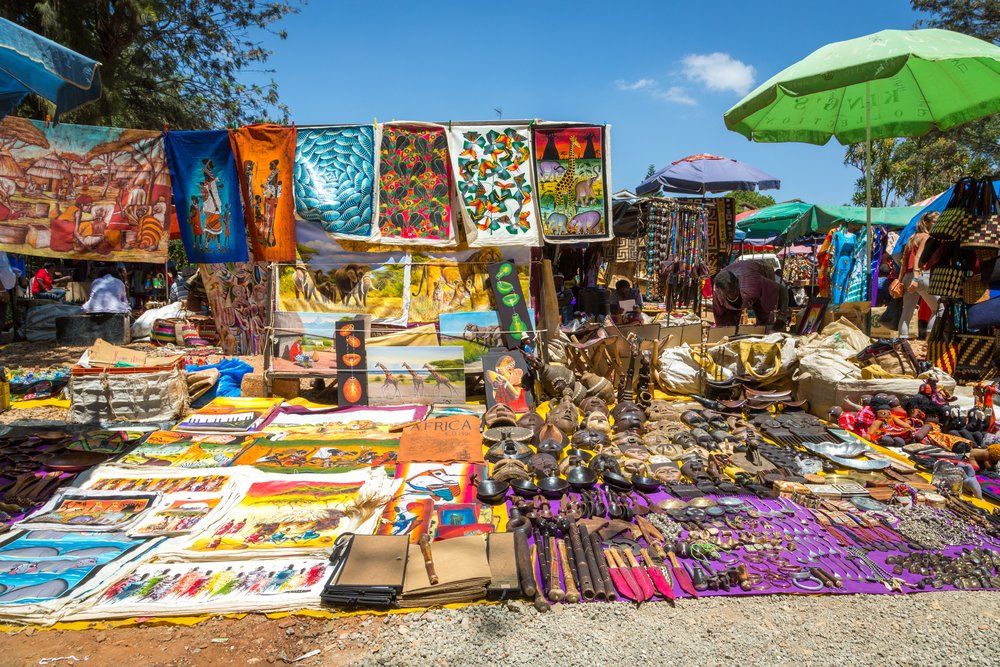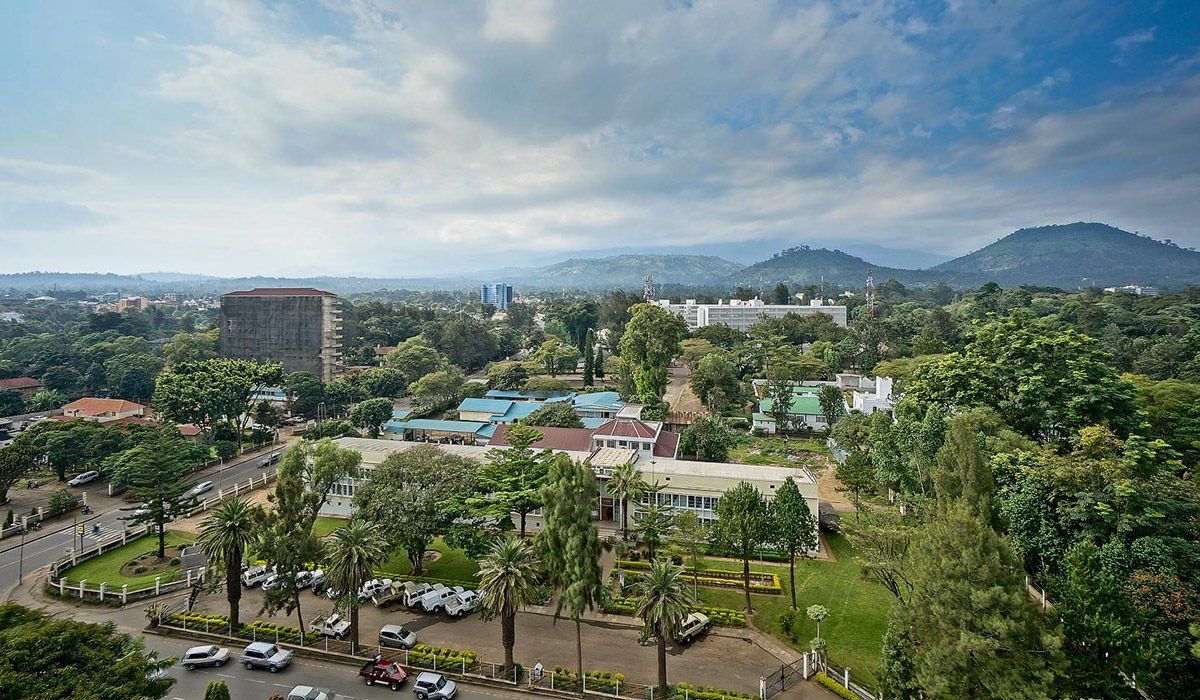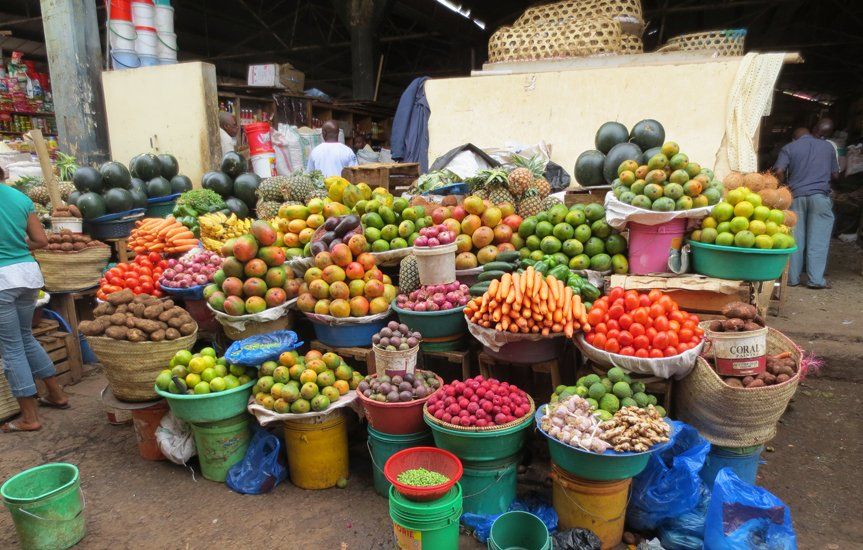TANZANIA NORTHERN CIRCUIT
SERENGETI NATIONAL PARK
- BEST TIME TO VISIT
The Serengeti is one of the areas that offers good game viewing all year round. While all seasons offer something spectacular, it is perhaps more important to decide what part of the Serengeti you would like to explore during your visit. This will largely depend on your sightseeing priorities and the timing and length of your visit.
SOUTHERN PLAINS AREA:
December – March: You will see herds of Wildebeest
February: Calving season is particularly rewarding, but wildlife sightings are down during the dry season.
CENTRAL SERENGETI AND SERONERA AREA:
Year-round: Very popular for wildlife viewing and offer the most lodging options. It is also the most crowded section of the park.
WESTERN SERENGETI AREA OR WESTERN CORRIDOR:
May – June: Offers decent wildlife viewing all year round with the migration reaching the Grumeti river around May or June. The river is also a great place to see crocodiles and hippos.
NORTHERN SERENGETI AREA (KOGATENDE, LOBO, LOLIONDO):
July – October: It is the least visited and most remote section of the Serengeti but also offers some of the top luxury camps and lodges in the country. There is a good possibility of seeing the Mara River crossings. Several camps in the north offer walking safaris and off-road experiences.
- ACTIVITIES IN SERENGETI NATIONAL PARK
GAME DRIVES
The Serengeti National Park is without doubt the best wildlife game viewing destination in Africa. One of the highlights and reason for the most visits to the Serengeti is the wildebeest migration which is found 12 months of the year in the Serengeti. The Serengeti open plains are dotted with a number of granite outcroppings also known as “kopjes” where prides of lions are found spending most of their day resting at the rock. You can explore the natural dramas of the Serengeti in our state of the art 4×4 safari vehicles during morning, afternoon or full day game drives.
BIRD WATCHING
The Serengeti has more than 500 bird species recorded. The Serengeti-Mara ecosystem is one of Africa’s endemic bird areas, hosting five bird species found nowhere else, half of which are confined to the Tanzanian portion of the ecosystem. Birding in Serengeti can be enjoyed throughout the year though we recommend November to April, the breeding period for most of the birds and they are nesting. Migrating birds from Europe and North Africa enable birders to break sighting records on a daily basis during this period.
HOT AIR BALLOON SAFARIS
Some things are worth waking up early for and this is one of them. You’ll be collected from your camp or lodge before the birds rise for departure to the launch site. Your pilot will give you a thorough safety briefing while the crew prepares the balloon for launch. As you rise into the lightening sky, the full scale of the Serengeti will unfold beneath you as the peace of the early morning descends. Untethered by roads, we’re able to float high over the plains, or descend to gently brush across the grassland seeking the herds of wildebeest or lions out on a hunt. Extend the magic by joining us for a full “Out of Africa” style breakfast laid out under an acacia tree as you relive the memory of a unique flight.
Flying daily from
- North Serengeti (June to end of October)
- Central Serengeti (Year-round)
- Western Serengeti (June to end of October)
- Grumeti Reserves (Private charters arranged through Singita)
SERENGETI VISITOR CENTRE:
This center at Seronera has a self-guided walk through the Serengeti’s history and ecosystems and it’s well worth spending time here before exploring the park. The gift shop sells various basic booklets and maps and there’s a coffee shop with snacks and cold drinks.
TARANGIRE NATIONAL PARK
Tarangire National park with its baobab crested landscape is scenically one of the most beautiful parks. Baobab trees tower above the savannah and these age-old trees play a vital role in the eco system as they act as homes for bees, birds and bats. In addition, they provide nourishing fruit and supply animals such elephants with indirect water especially during the drier months.
The south of the park is dominated by marsh land, which is impassable in the wet season but tends to dry out completely in the dry season. The vegetation within the park is extremely diversified and includes open grasslands, savannah, Baobab trees and thick acacia bush as well as palm trees and swamps full of tall elephant grass in the south. Walking safaris are also offered in the southern part of the park.
One of the lesser-known game reserves in Tanzania, Tarangire rivals the Serengeti in the great number and diversity of its wildlife. It is a good choice for travellers who wish to encounter more animals (particularly elephants as it is renowned for frequent sightings) and less tourists while on safari.
- BEST TIME TO VISIT
June through to November: We recommend that you visit the park in the dry months as most of the animals will head towards the Tarangire river to remain hydrated. This will provide travellers with excellent game viewing opportunities. It is primarily a dry season park - not because animals are impossible to spot in the rains, but because animals actually migrate out of the park in the lower season months.
- ACTIVITIES IN TARANGIRE NATIONAL PARK
GAME DRIVES
It's a beautiful park, typified by century-old baobabs that stand sentinel above the open grass plains and riverbeds. The varied habitats are home to 94 mammal species of which huge numbers concentrate around the permanently flowing waters of the Tarangire river (particularly during the dry season). In fact, given its dense concentration of animals, there is every chance that you will enjoy a higher incidence of sightings than in the Serengeti. Elephants are particularly common, with herds numbering in the hundreds.
BIRD WATCHING
Home to more than 550 species, the park is a haven for bird enthusiasts who can expect so see dozens of species, even in the dry season. The swamps are the focus of the largest selection of breeding birds anywhere in the world. Yellow-coloured Lovebirds are commonly seen in the trees along the Tarangire river.
WALKING SAFARI (Conservation areas around the park)
There is no better way to get up close and personal to the wild than by taking a walking safari. Feel the ancient earth beneath you as you tread on the tracks of animals that might have walked the same path just minutes before. Accompanied by an experienced guide, you will learn about the flora and the fauna and begin to understand the true majesty of the indigenous peoples that live and thrive on the land.
NIGHT GAME DRIVE (Conservation areas around the park)
Often done just after dusk, a night game drive in Tarangire is a rare opportunity to see how the bush comes alive after dark. Accompanied by an experienced, qualified guide, the night drive will provide some insight into the nocturnal wildlife that is often overlooked or inaccessible to visitors who remain in the confines of the national parks. Clients with a keen, focused eye, will not be disappointed with the wonders of a night drive.
LAKE MANYARA NATIONAL PARK
The shores of the lake attract more than 400 species of birds, including flamingos - many of them waterfowl or migrants. Large herds of buffalo, Masai giraffe and impala roam the lake shores and the forested valley slopes.
A Lake Manyara safari is a fascinating experience, as the park also features a ground-water forest, acacia tortilis woodland and hot springs, called Maji Moto. Troops of several hundred olive baboons appear alongside Sykes monkey and short-eared galago. Other residents include Cape clawless otters, Egyptian mongooses, hippos and klipspringers.
Although Lake Manyara National Park is one of the smaller parks in Tanzania, its beautiful landscape is home to an interesting collection of wildlife. Lake Manyara is a soda/alkaline like that reaches a maximum depth of 3.7 m. The vegetation changes from ground water forests to flood plains and finally to acacia wood plains.
Tourists often visit Lake Manyara National Park en route to or from the Ngorongoro Crater as part of a short safari.
- BEST TIME TO VISIT
Park can be accessed throughout the year.
June - October: Best time to see large mammals
November - July: Ideal time for bird watching
- ACTIVITIES IN LAKE MANYARA NATIONAL PARK
GAME VIEWING
Lake Manyara is the ideal location for a game drive because of its many ecosystems. It is said to have 11 different systems and the area is a hotspot for all types of animals and plants. The lake, the rift valley cliffs, the ground water forest, Ngorongoro highlands and the dry Tarangire system are but some of the wonderful sights on offer. During the game drives you will encounter elephants and huge number of baboons. Due to its varied landscape, other species easily spotted are lions, blue monkeys, hippos, giraffes, impalas and cheetahs.
NIGHT GAME DRIVES
These outing start at 19h00 and end at 23h00. Night game drives open up a whole new world of nocturnal animal species. It will give you a different perspective of the park and wildlife.
Additional fees apart from park fees.
BIRD WATCHING
The park offers a delightful diversity of bird species. It has over 390 bird species consisting of migrants and residents. You should even see flamingos as they perpetually migrate. Other large water birds seen here include pelicans, cormorants and storks.
What are the bird watching hotspots?
- Hippo pool view points
- Boardwalk way at Majimoto
- Ground water forest (the later for breeding species)
Best time for bird watching- November to July is ideal time for bird watching.
No additional fee for this activity.
TREE WALKWAY
This walkway takes you on a sky-high adventure through the beautiful forest of Lake Manyara. Walk among the treetops and experience untouched nature and wildlife from a unique perspective. This 370m airwalk starts with a short board-walk that gradually rises from ground level up through the canopy of the forest. You will walk over a series of suspension bridges with thick netting on the sides and reach a height of 18m off the ground. Each of the bridges end on a viewing deck situated around tree trunks. These treetop platforms are perfect places to stop and enjoy life in the canopy amongst butterflies, monkeys and birds. During this walk the guides will point out interesting facts about the Lake Manyara flora and fauna, while you can enjoy a unique birds-eye view of the world around you. This is Tanzania's first treetop walkway and one of the longest in Africa. It is a great outdoor activity for nature lovers and adventure seekers. Families, couples, individuals and groups are all welcome.
Additional fees apart from park fees.
WALKING SAFARI
Hike down the Great Rift Valley, through a dense ground water forest. View birds, monkeys, bush buck and other forest animals. Immerse yourself in the sounds of the forest with fresh streams and waterfalls surrounding you. Walking safaris last 2 ½ - 3 hours.
Additional fees apart from park fees.
CANOEING
Lake Manyara is home to an incredible array of bird life, including thousands of pink-hued flamingos. You can get very close to giraffes, elephants, buffalos and other animals grazing on the shoreline, all from the comfort of your canoe. Enjoy the breathtaking scenery and the beauty that surrounds you on this 2.5-hour canoe safari. Additional fees apart from park fees.
NGORONGORO CRATER & CONSERVATION AREA
- BEST TIME TO VISIT
The Ngorongoro Crater is year-round attraction but can become quite busy during the high season from June to October.
Sweeping grasslands join the Ngorongoro Conservation Area and the Serengeti. As such, it forms part of the annual migratory route of hundreds of thousands of wildebeests, zebras, antelopes and their predators who come to graze and calve between December and March.
- ACTIVITIES IN NGORONGORO CONSERVATION AREA
GAME DRIVES
Ngorongoro Crater is one of the most likely areas in Tanzania to see the endangered Black Rhino, as a small population is thriving in this idyllic and protected environment. It is currently one of the few areas where they continue to breed in the wild. Your chances of encountering leopard here are also good, and fabulous black-maned lions. Many flamingos are also attracted to the soda waters of Lake Magadi.
OLDUVAI GORGE
This is known as the cradle of mankind. Layer upon layer of volcanic deposits were laid down in orderly sequence over a period of almost two million years, making Olduvai Gorge a remarkable site that documents ancient life. It is here that Leakey discovered ‘Nutcracker man’ after nearly 30 years of excavation. There is a museum with a lot of information for those interested in history and/or archaeology.
MASAAI VILLAGE
A visit to a Maasai boma is an interesting experience. As you arrive at the village, you will be welcomed with song and dance. One of the dancers will jump up and down gracefully in intervals. These jumps can be several feet high! You will then be welcomed into one of the homesteads in the village. The village huts (called Manyatta) are made of cow dung and clay plastered over stick frames. This is a wonderful opportunity to learn about the history and lifestyle of the Maasai.
BALLOON SAFARI
This is probably the most beautiful balloon flight in the world and the ultimate safari experience! We will take off at dawn, rising as the sun rises and float in whichever direction the morning wind takes us. Your pilot has precise control over the altitude of your balloon, sometimes flying at treetop height, sometimes lower, offering a unique perspective and great photographic opportunities of the wildlife below. After the flight you can enjoy some sparkling wine before sitting down to a full English breakfast prepared and served in the bush in “Out of Africa” style.
Flying Daily from:
Ndutu (December to end of March)
MOUNT KILIMANJARO NATIONAL PARK
- BEST TIME TO VISIT
It is important to understand that the weather on Kilimanjaro is as changeable and unpredictable as mountain weather all over the world. The best climbing seasons are December to March and June to October. The only real recommendation to climbers is to avoid the long rainy season (April to May) as the mountain becomes slippery and treacherous. The average day temperature on the lower slopes is around 30°C, while temperatures can range from 5 to 15°C at 3000m in altitude during daytime. Night time, temperatures on the mountain can be well below freezing, even at your first campsite.
- ACTIVITIES AT KILIMANJARO
MOUNTAIN CLIMBING
- MACHAME ROUTE– This exceptionally scenic route around the southwest and south sides of Kilimanjaro. Highlights include the beautiful Shira sunsets, the great Barranco Wall, Lava Tower and stunning views of Mount Meru.
- UMBWE ROUTE- Umbwe’s steep, challenging slopes mean far fewer trekkers choose this difficult but beautiful route.
- LEMOSHO ROUTE - This scenic route is far less travelled than most. Lemosho gives trekkers ample time for acclimatisation and offers excellent scenery.
- RONGAI ROUTE – This route is much easier than the Machame Route but less scenic. You will descend using the Marangu route, enabling you to see multiple views of the mountain.
- MARANGU ROUTE - A popular route on Kilimanjaro and also called the “Coca-Cola Route”. You will ascend and descend using the same paths and overnight in large communal huts.
SHORT NATURE WALKING SAFARI’S
- Marangu via Lauwo waterfall to Mandara (12Km)
- Machame gate to Machame hut (11Km)
- Morum barrier to Shira I (06Km)
- Rongai gate to Simba camp (05Km)
BIRDING
There are about 179 bird species inhabiting different vegetation zones, thus giving you the opportunity to see them in different climatic zones. Birds like the white necked raven, lammergeyer and alpine chat are commonly seen in high altitude zones.
CYCLING
The Kilema route takes you to the highest point in Africa while cycling. It has three stations: Kilimamchele (9km), Maua (12km) and Kibo (21km) in the direction of the Kilema gate. There is also a non-summit bound route/circuit totalling 44.3 km in the Shira plateau where you can spend one to four days, depending on your time and budget.
Additional fees apart from the conservation fees.
PARAGLIDING:
The operator will propose the most suitable launching area on the mountain as well as the landing site in or outside the park.
Additional fees apart from the conservation fees.
ARUSHA NATIONAL PARK
Further north, rolling grassy hills encircle the tranquil beauty of the Momela Lakes, each displaying a different hue of green or blue. With their shallows sometimes tinged pink with thousands of flamingos, the lakes support a rich selection of resident and migrant waterfowl and shaggy waterbucks display their large lyre-shaped horns on the watery fringes. Giraffes glide across the grassy hills between grazing zebra herds, while pairs of wide-eyed dik-dik dart into scrubby bush like overgrown hares on spindly legs.
- BEST TIME TO VISIT
Arusha is a year around destination with the best conditions in the dry season from July to November, or after the short rains from December to March.
The best months to climb Mt Meru: June to February.
Best views of Kilimanjaro: December to February.
- ACTIVITIES IN ARUSHA NATIONAL PARK
GAME DRIVES
While exploring the park, you can easily spot animals like reedbucks, waterbucks, bushbucks, leopards, hyenas, buffalos, black and white colobus monkeys and a variety of birds. The attractiveness and serenity of the grass-filled hilly area blends with the tranquil beauty of the flowers blushing in the rise of the sun.
CANOEING
Momella Lake canoe safaris are available in the morning or afternoon and last 2-3 hours.
Extra costs apply.
BIRD WATCHING
Bird life is abundant, with around 400 species recorded in the park. Due to their varying mineral content, each lake supports a different type of algal growth, which gives them different colours. The park's bird population increases dramatically when migratory birds arrive around November. They usually stay until April. Highlights of the forests include the turacos and trogons.
WALKING SAFARIS
Many trails pass below Mt Meru and one of them follows the Ngurdoto crater rim trail (descending into the crater is not permitted). The walk to the Njeku viewpoint in the Meru crater floor follows stage 1 of the climb up Mt Meru and is an excellent day hike.
THREE/FOUR DAY MT MERU CLIMB
It is a good acclimatisation exercise in preparation of your Kilimanjaro climb. At 4566m, Mount Meru is Tanzania’s second-highest mountain. It is a spectacular volcanic cone and seen as one of East Africa’s most scenic and rewarding climbs. The dramatic walk along the knife edge of the crater rim ensures extra excitement.
LAKE EYASI
- BEST TIME TO VISIT
Lake Eyasi’s offerings are highly seasonal and fluctuates between being a bird-filled watering hole to a dry lake bed, depending on what time of the year you visit. During the dry months of June to October Lake Eyasi almost dries out completely. That being said, it always offers excellent photographic opportunities. With the long rains from March to May, Lake Eyasi fills with shallow water and birds arrive from near and far to breed. Birders wanting to see a diverse range of species should be here when that happens. Here you won’t be bombarded with the crowds typically associated with Tanzania’s more popular national parks and wildlife reserves.
- ACTIVITIES AT LAKE EYASI
CULTURAL EXPERIENCE - HADZABE BUSHMEN
A visit with the bushmen is more than worthwhile. They will graciously show you where and how they live and hunt. They subsist entirely off the bush and by bow hunting. Everything they use is made from local materials, including their bows which are strung with giraffe tendon and their arrows coated in lethal poison. Their language resembles that of the Kalahari bushmen tribe (in South Africa) with clicking noises used.
BIRD WATCHING
Keen birders will fall in love with this lake as it attracts vast numbers of birds of all sizes and colours. Watch out for the Africa spoonbill, flamingos, grey headed gulls, great white pelicans, pied avocet and yellow-billed storks. Catfish and lungfish are commonly found in the lake.
LAKE NATRON
- BEST TIME TO VISIT
The period June to October is the best time for walking and hiking tours. The weather at Lake Natron is mostly hot and dry. Although June to August are the coolest months, some guests still experience these temperatures as tropically warm. During the rainy period (November to May), some activities may be cancelled due to heavy rains.
- ACTIVITIES AT LAKE NATRON
BIRD WATCHING
It is the most important breeding site for lesser flamingos in the world. East Africa has 1.5-2.5 million lesser flamingos, representing three-quarters of the world population. Most of them are hatched at Lake Natron. Food is plentiful, nesting sites abound and above all, the lake is isolated and undisturbed. The flamingos of Natron normally lay their eggs during the end of the dry season in September and October but the hatching starts in the early parts of the wet season, climaxing by December.
WALK ALONG THE SHORE
A Maasai guide will take you for a walk along the shores of the lake. In the dry season, you will feel as if you are in an apparently uninhabited, dessert-like dream world.
HIKE TO THE ENGARESERO RIVIER
A Maasai guide will lead you along the ridges of the lake to the source of the Engaresero river. After the rainfall in the Rift Valley, water starts bursting over the escarpment, forming waterfalls and streams of sparkling clear water, inviting you to dive in and enjoy it.
OL DOINYO LENGAI VOLCANO CLIMB
Embark on an overnight ascent to the summit of the famous “Mountain of God”. Climbing the 2 962m volcano lit by moonlight is an unforgettable and mystical experience. This is one of the most challenging 1-day climbs in East Africa! This trek is not for the faint hearted but worth it for the un-paralleled views from the top at sunrise. On a clear day you can expect to see the tips of Meru and Kilimanjaro pierce through the horizon to the east. To the north you can see to the far end of Lake Natron, where its northern shores border Kenya. To the west you will be able to see over the escarpment across the Sale plains all the way to the Gol Mountains. You will be treated to a spectacular, almost surreal view!
RIFT VALLEY DAY HIKE
This adventurous hike commences before dawn and takes you to the base of the rift valley wall. You will then scale the wall while ascending close to the Ngare Sero Gorge to enjoy the dawn. There you can celebrate with some picnic food and indulge in one of the most dramatic viewpoints in the region. After breakfast you can either return to camp via the same route or choose one of the other routes, depending on time.
ARUSHA CITY
- BEST TIME TO VISIT
Since Tanzania lies near the equator, there are very little seasonal variations, making temperatures fairly consistent all year-round, averaging at 30 °C during the day and dropping to a comfortable 15°C at night. The main variation to the impact of the temperature is the humidity and the annual rains. The all-year good weather is one of the main reasons that Arusha is such a popular destination.
- ACTIVITIES IN ARUSHA CITY
ARUSHA CLOCK TOWER
The tower has historical colonial significance as it was built by a Greek named Galanos and marked the site of the first German headquarters in Tanganyika in the late 1800s. Currently, the Arusha clock tower marks the exact midpoint between Cairo and Cape Town, as well as the centre of Uganda, Kenya and Tanzania making it a point of interest during your visit to Arusha.
CULTURAL HERITAGE CENTRE
The centre features the cultures of all the tribes of Tanzania in one building.
MESERANI SNAKE PARK
It is located 25km from Arusha on the way to Serengeti and Ngorongoro. The park is home to 48 species of snakes and other reptiles. Visit the Meserani Snake Park for reptile education on Africa's less notorious, but most efficient predators. Learn facts about snake species and other reptiles plus a few bird species. You can also visit an onsite Maasai cultural museum and learn more about the Maasai culture.
ARUSHA DECLARATION MONUMENT
This towering monument was erected in 1977 by the then Tanzanian ruling party to commemorate 10 years of the Arusha Declaration. It is probably the most impressive piece of architecture in Arusha and lies along Makongoro road at the centre of the roundabout. The Arusha Declaration Monument symbolises the birth of Arusha's Declaration on February 5, 1967 which laid out the guidelines of Tanzania's socialism. The declaration stressed the importance of hard work and longer working hours as the key to Tanzania's future economic success, rather than dependence on foreign aid, loans and industrialisation.
ARUSHA NATIONAL PARK (Day Visit)
Visit Arusha National Park for an excursion that packs the full safari experience into a single day. With a wide range of ecosystems within the park boundaries, Arusha National Park offers a great opportunity to spot diverse wildlife in limited time. The tour includes convenient door-to-door transport from Arusha, entrance fees and lunch.
LOCAL MARKET
Arusha Central Market offers many shops selling Maasai fabrics and hand-woven baskets. However, for the best in African souvenirs and curios, it’s worth heading to the Mt Meru Curios & Crafts Market (often referred to as the Maasai Market) on Fire Road. It will take some confident bartering and a keen eye to pick out the best items, but it has the widest selection of goods in the city.
MOUNT KILIMANJARO CLIMB DAY TRIP
You certainly can’t climb Kilimanjaro in a day, but our day tour to this iconic, snow-capped mountain will give you an excellent taster of why Africa’s highest peak is so popular. During the course of the day (about 10 hours), we will follow the popular Marangu route and walk as far as the first hut, the Mandara, to enjoy a picnic lunch. As other trekkers continue upwards, bound for the summit, we will start the descent again and return to Arusha.
We will collect you at 07h00 for the three-hour drive to the Maranga gate for registration, before starting your hike at around 10h00. The Maranga route approaches Kilimanjaro from the southeast.
We will only trek through the lower altitudes and enjoy a picnic lunch on the way to the Mandara hut. Once we reach the hut at about 14h00, we will rest for 30 minutes before starting a slow descend of about 2.5 hours to the Marangu gate. Rupia Adventure's vehicle will be waiting to pick you up and return you to your hotel in Arusha, arriving at 16h00.
WATERFALL AND COFFEE WALKING TOUR
This is an amazing day trip that takes you right into the foothills of Kilimanjaro. You will not only enjoy a scenic drive and jaw dropping views, but learn about the beautiful side of Tanzanian culture. We will hike through the foothills overshadowed by Mount Kilimanjaro, then walk to the majestic waterfalls, pass through a small village and have lunch in Moshi town. It is followed by an interesting coffee tour that will teach you more about the history of coffee farming in Tanzania.
